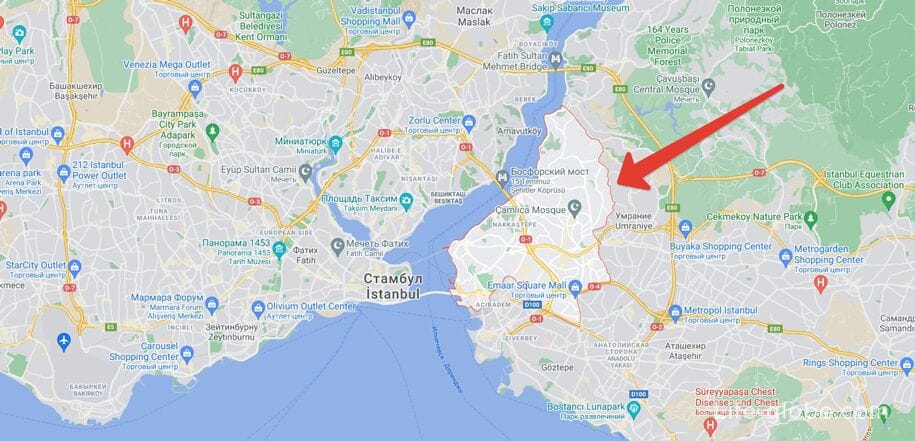
Uskudar (Üsküdar) is a large district of Istanbul, located in the Asian part of the city, near the waters of the Bosphorus.
Kuzguncuk is part of the Uskyudar district and one of the most attractive quarters of Uskyudar.
The current Uskudar is located on the site of the ancient city of Chrysopolis (ρρυσππολις, "Golden City"), founded in the 7th century BC by ancient Greek colonists from Megara (Greece).
Today, Uskudar is a beautiful green residential area of Istanbul, washed by the waters of the Bosphorus Strait. Across the Bosphorus Strait, opposite the Uskyudar district, on the European side of Istanbul, there are such areas as: historical Fatih and Beyoglu (Beyoğlu), business, commercial and cultural district of Besiktas (Beşiktaş), as well as the Golden Horn Bay (Halic, Haliç).
View of the Uskyudar district from the waters of the Bosphorus

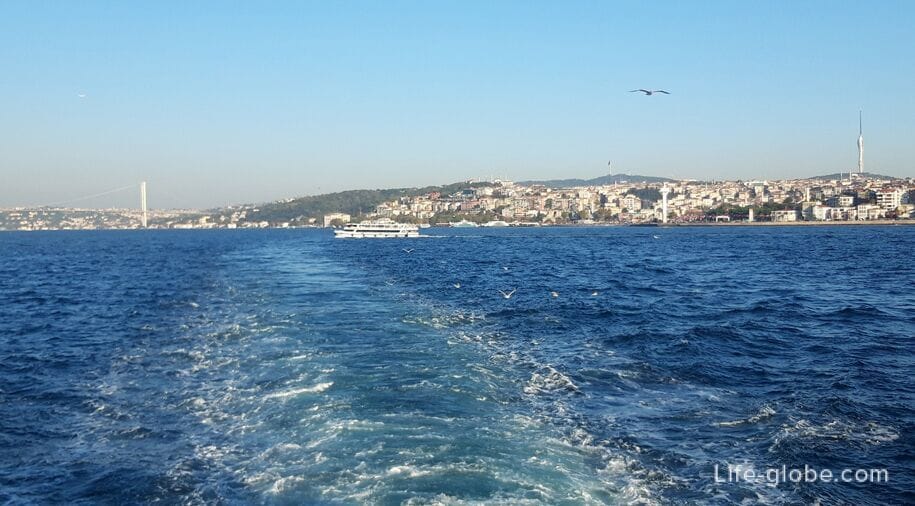
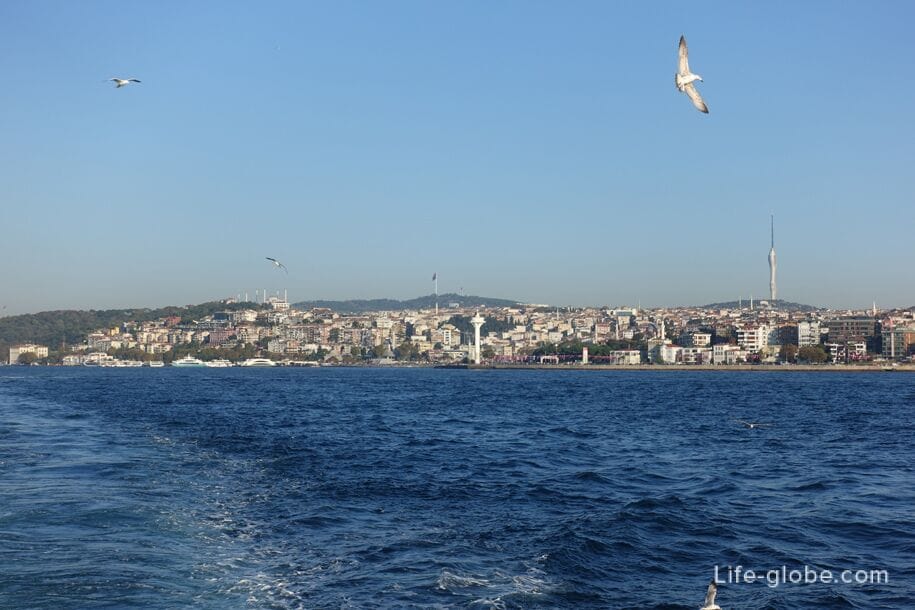
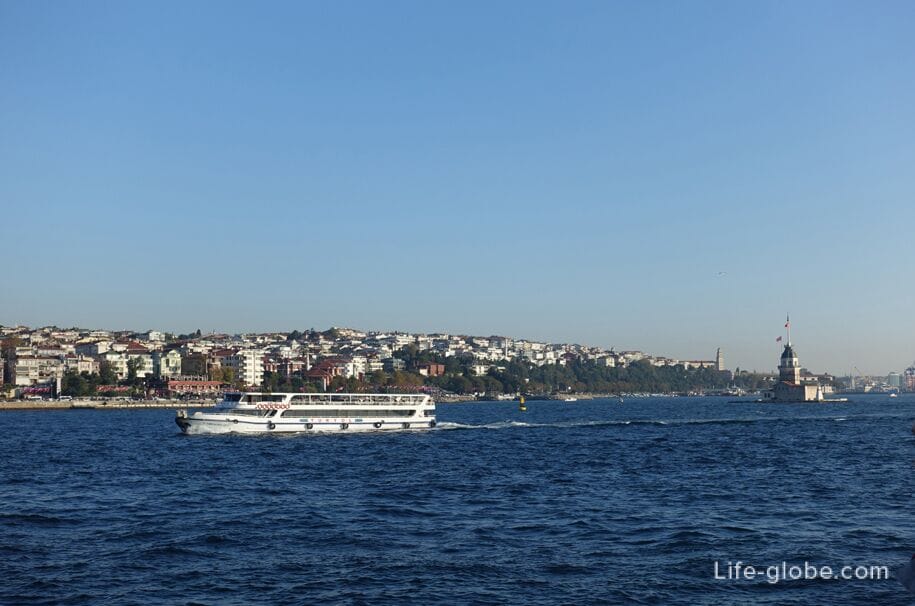
View of the Bosphorus and the European side of Istanbul from the Uskyudar district
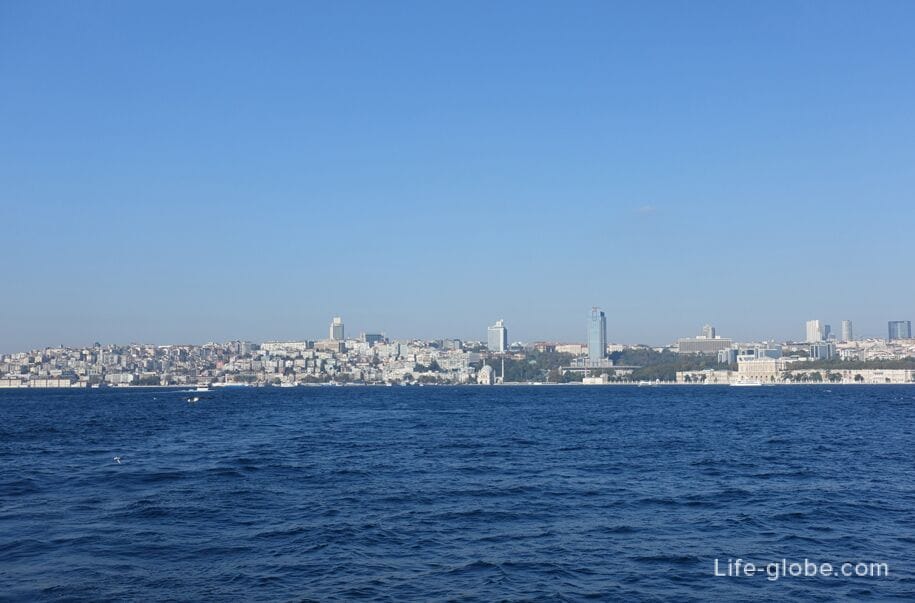
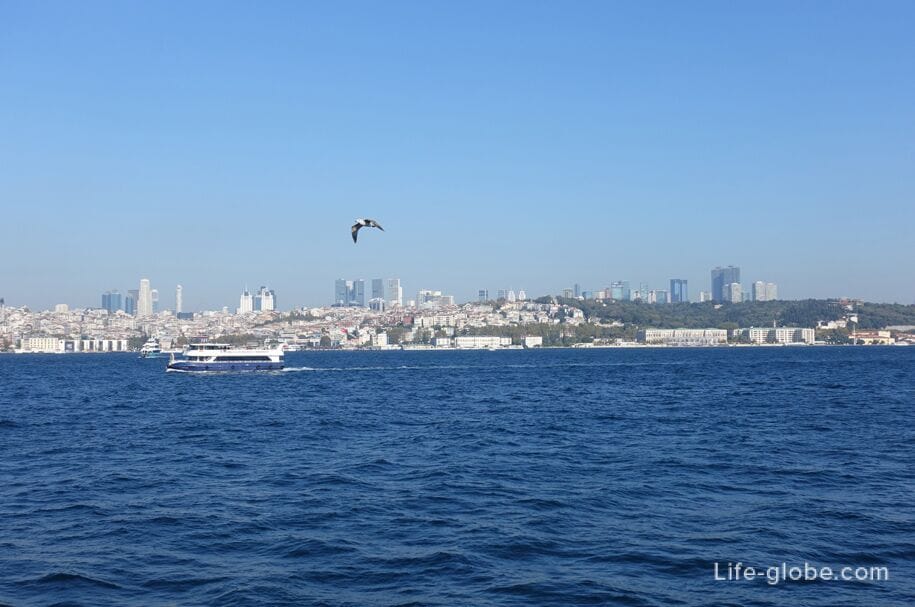
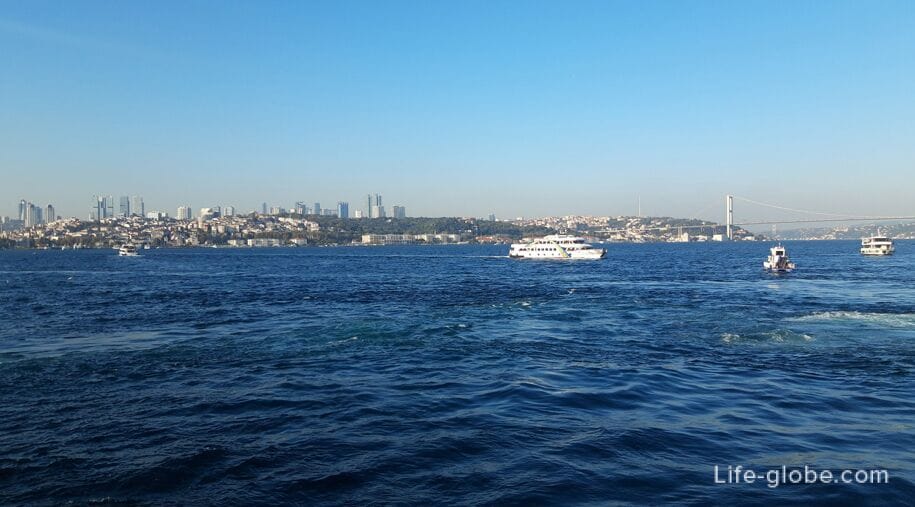

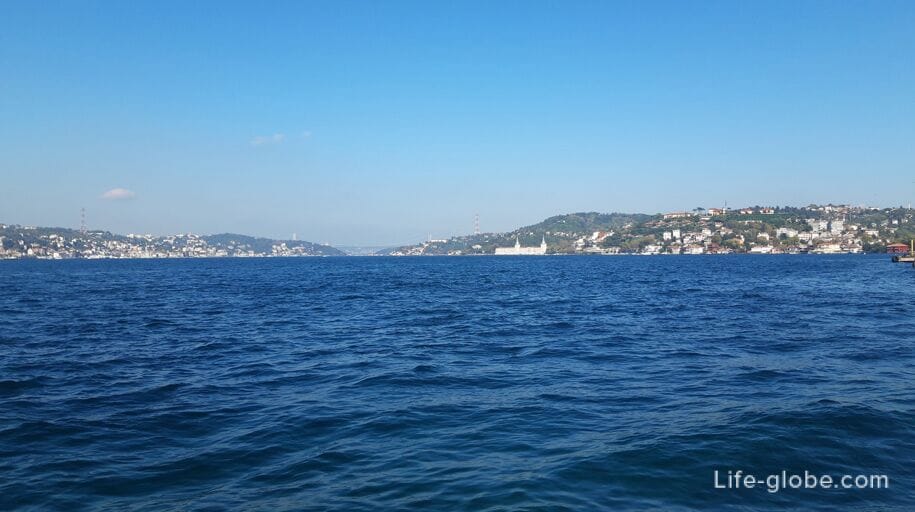
Some significant sights of Istanbul, including the Sultan's palace, mosques and historical monuments, have been preserved in the Uskyudar district.
The tourist center of the Uskyudar district is Mimar Sinan, which is located near the ferry pier "Üsküdar".
Beautiful embankments stretch along the waters of the Bosphorus in Uskyudar. Also in the area there are parks with views of the Bosphorus and the European side of Istanbul; a theater in a converted industrial building (Istanbul Devlet Tiyatrosu Üsküdar Tekel Sahneleri), wall fountains, a shopping center, shops, markets, cafes, restaurants and accommodation facilities (hotels, apartments)
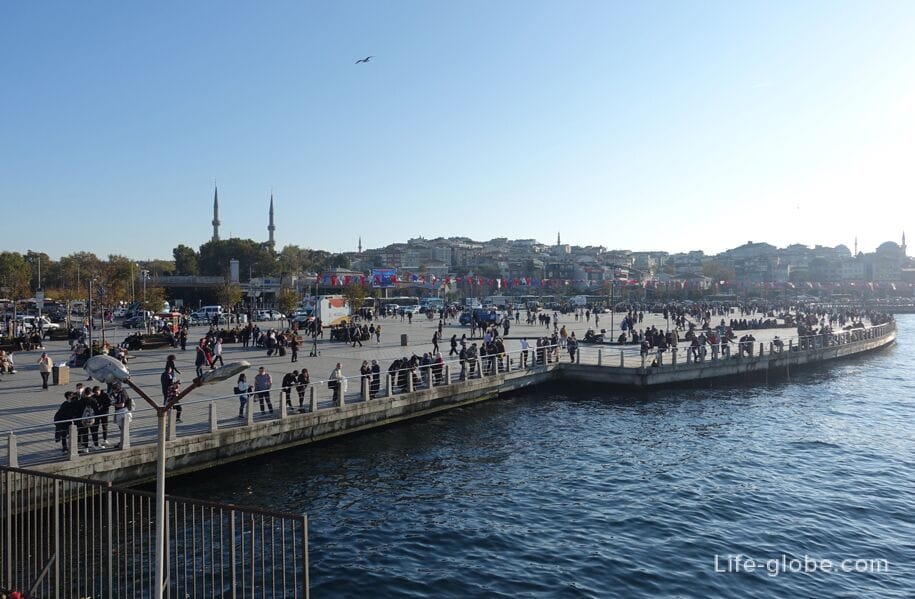


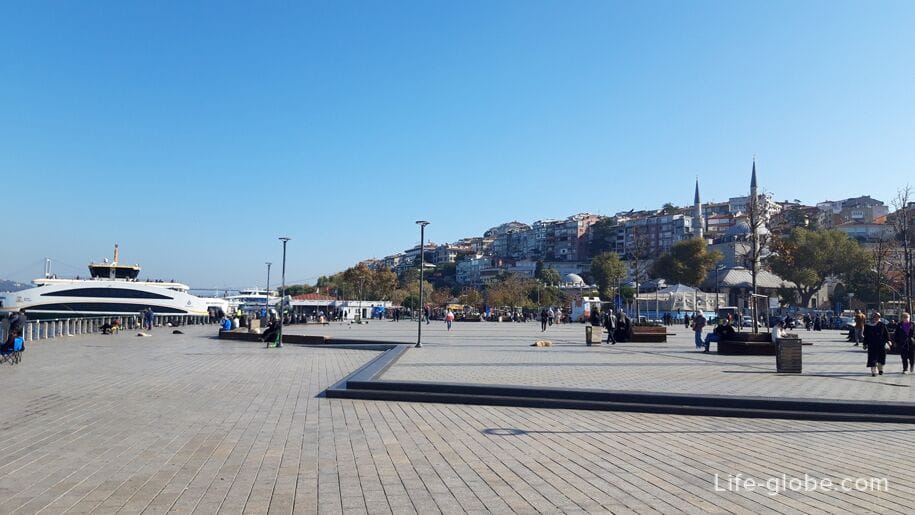
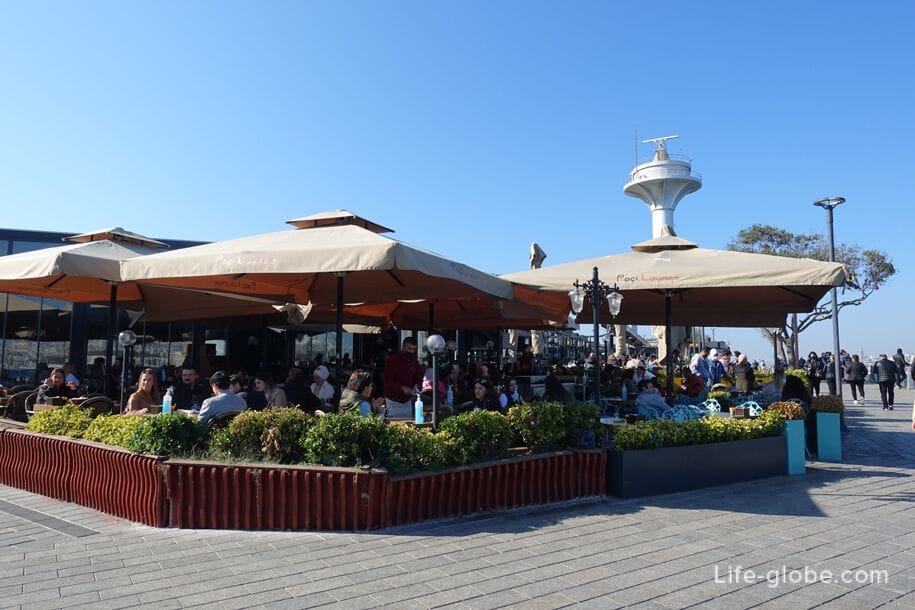
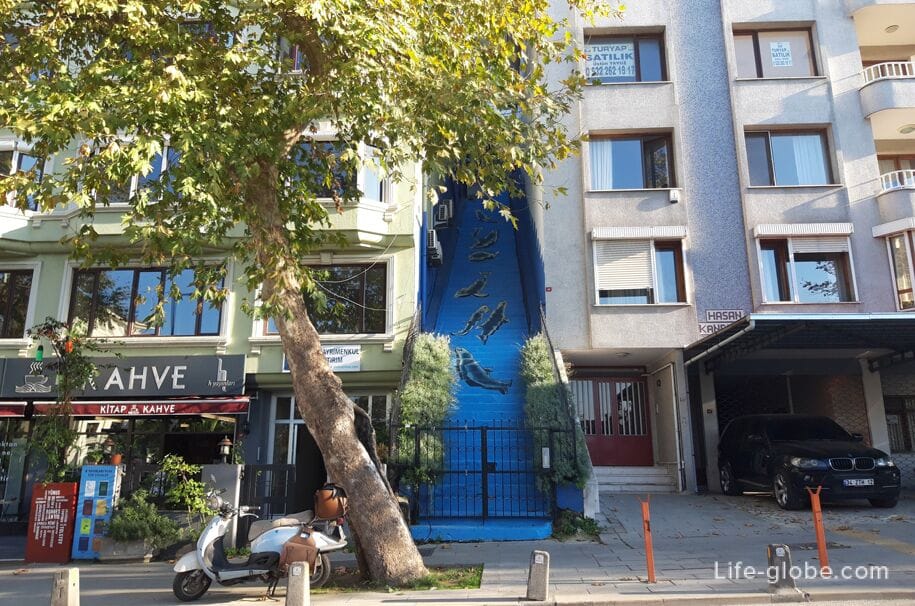
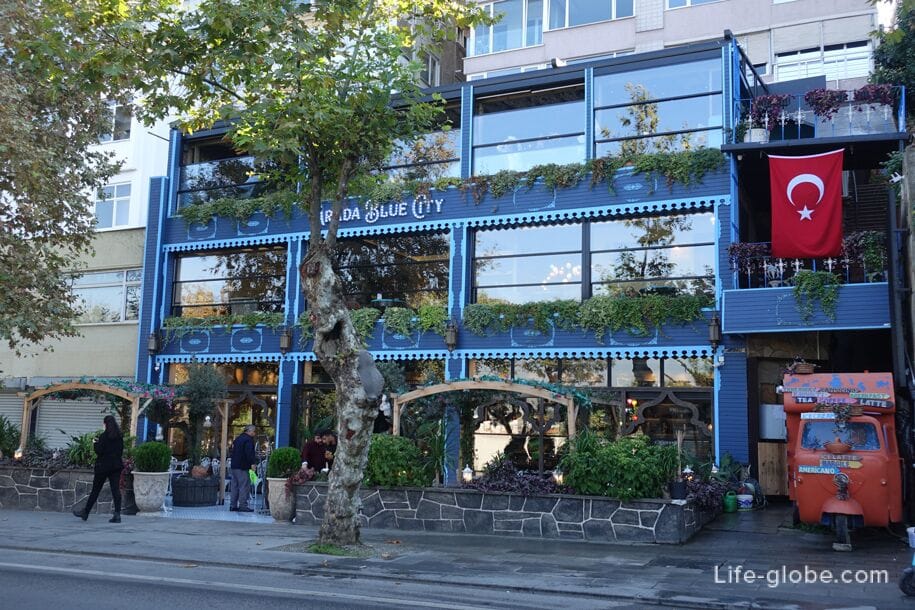
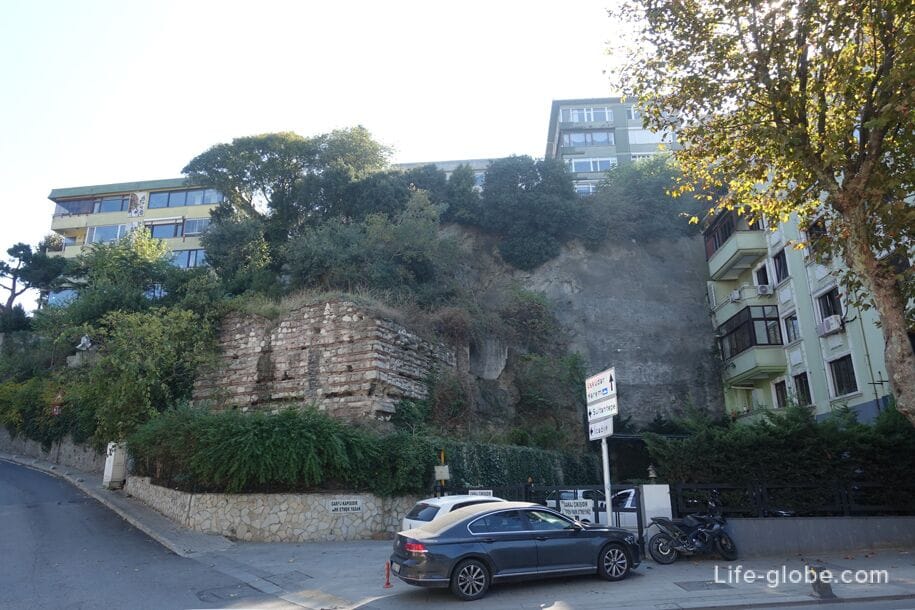

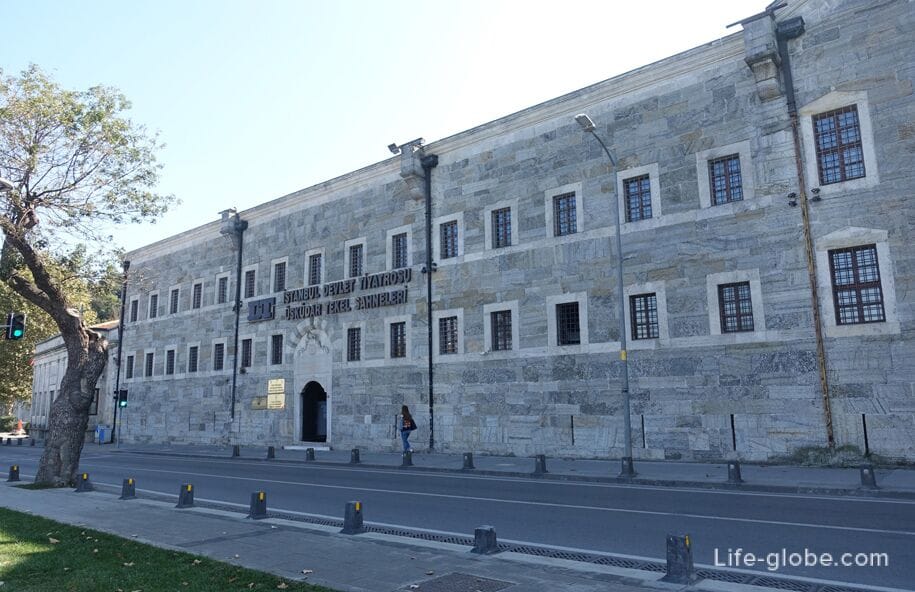
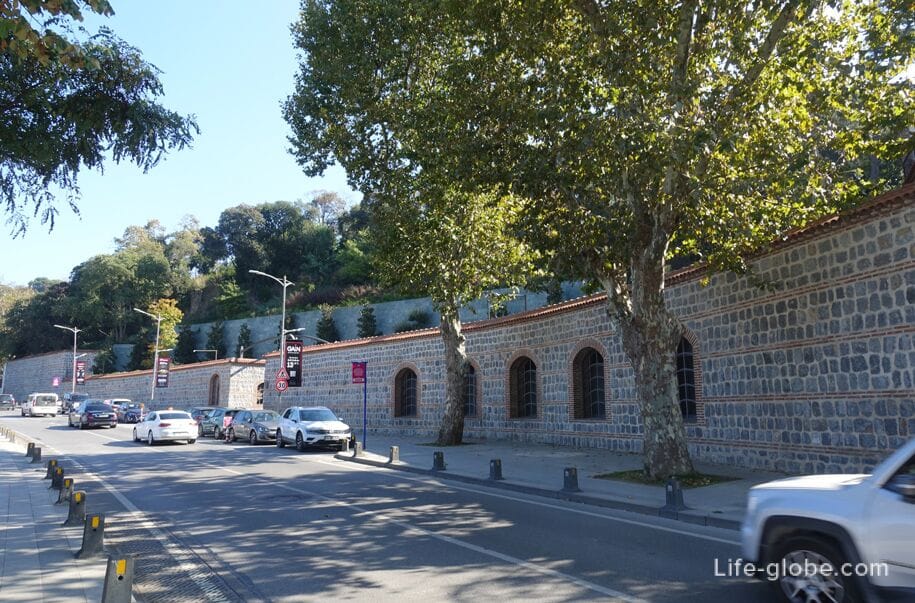
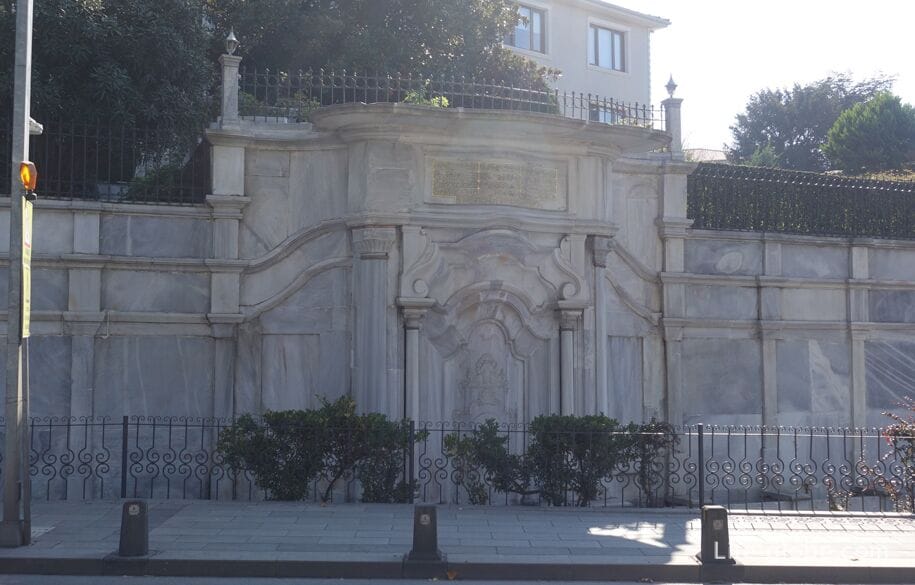

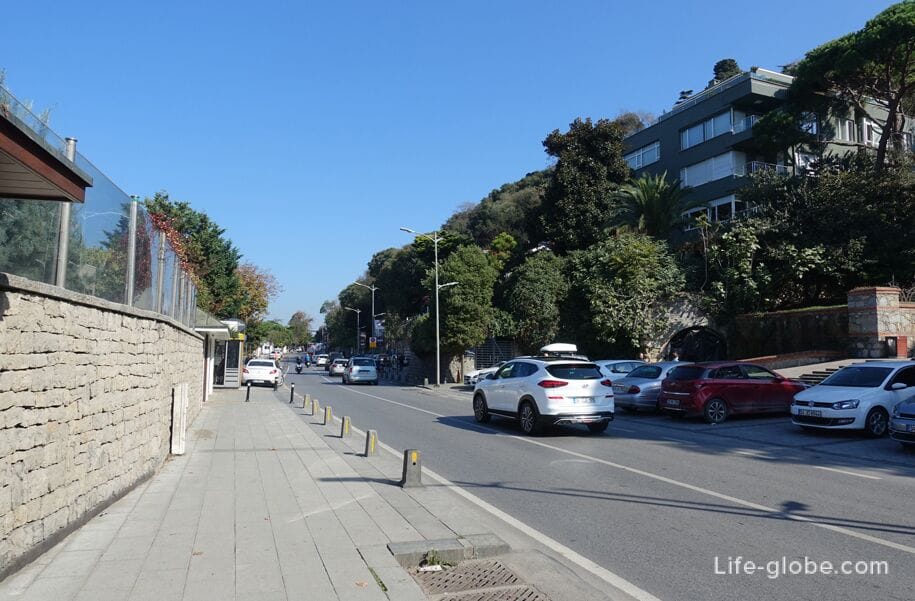
The longest and best promenade for walking in Uskyudar - Salacak (Salacak) is located in the south-east of the district and stretches along the waters of the Bosphorus for more than 2 kilometers from the ferry pier "Uskyudar" and down.
Along the embankment there are, including a mosque, a monument, cafes and restaurants.

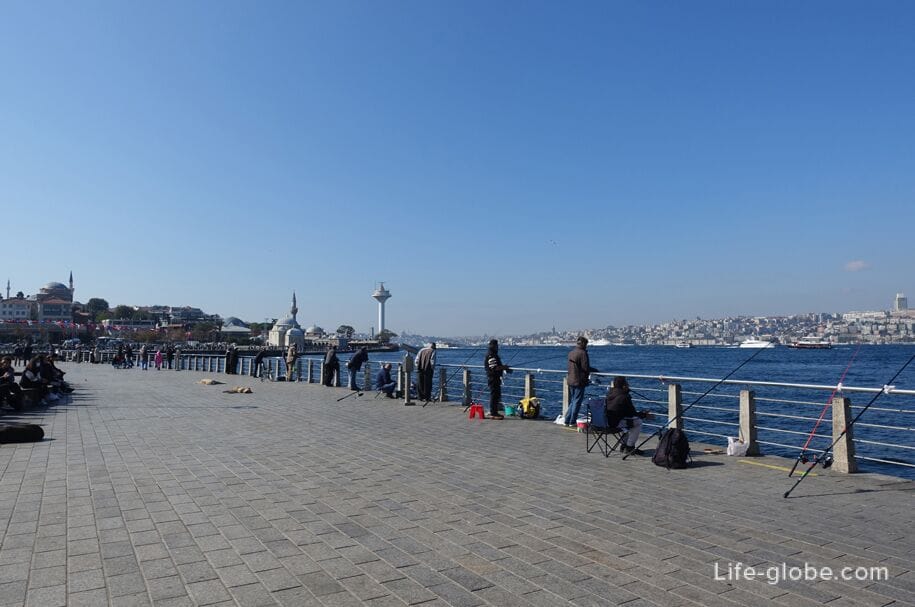
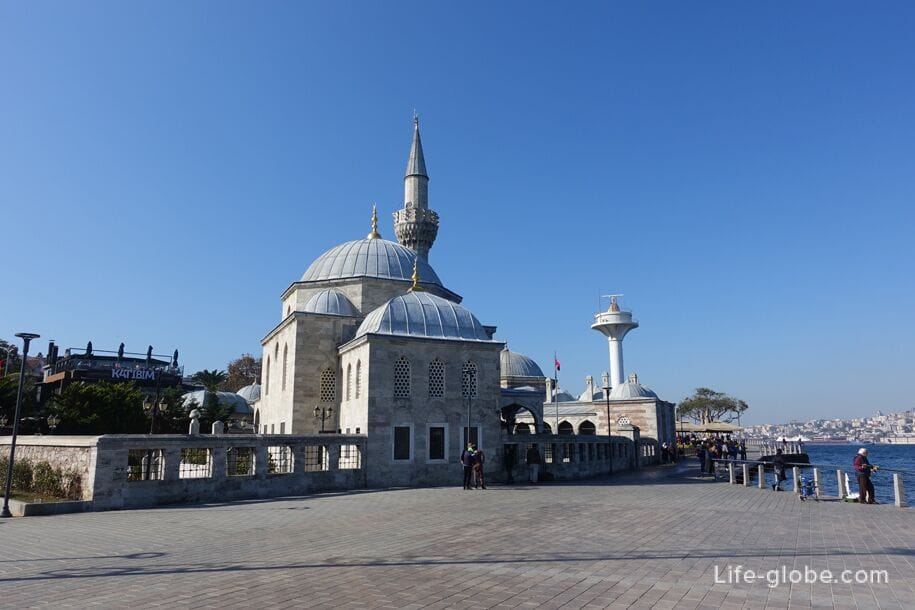


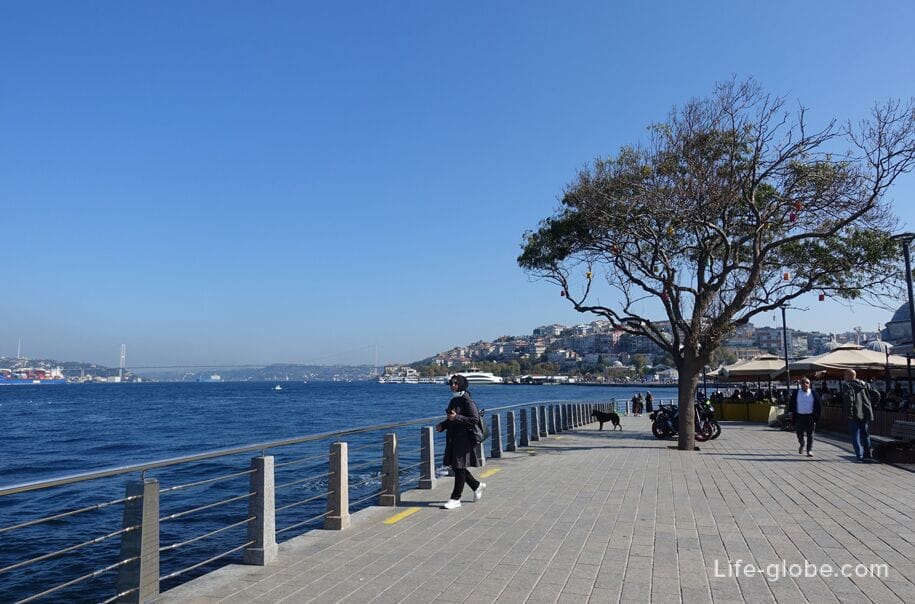
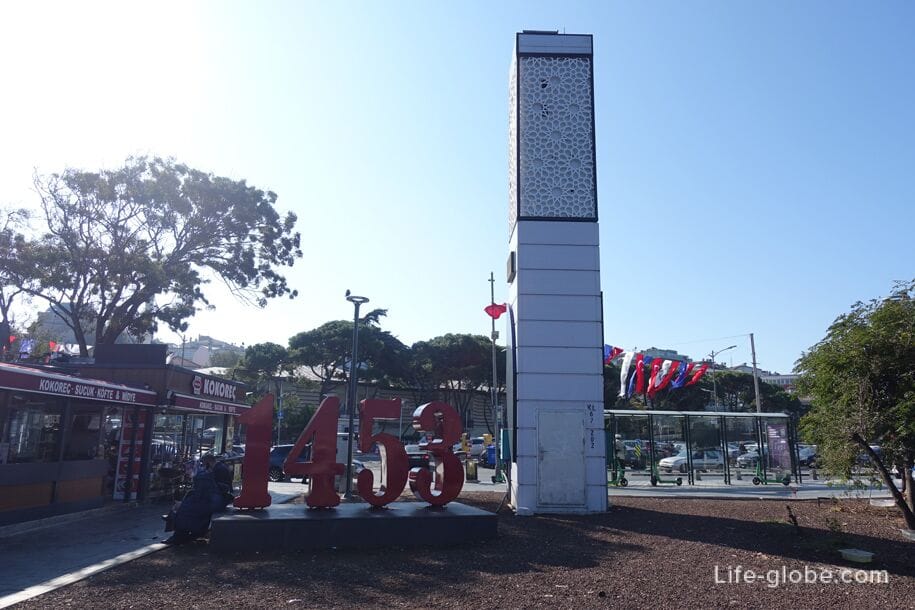
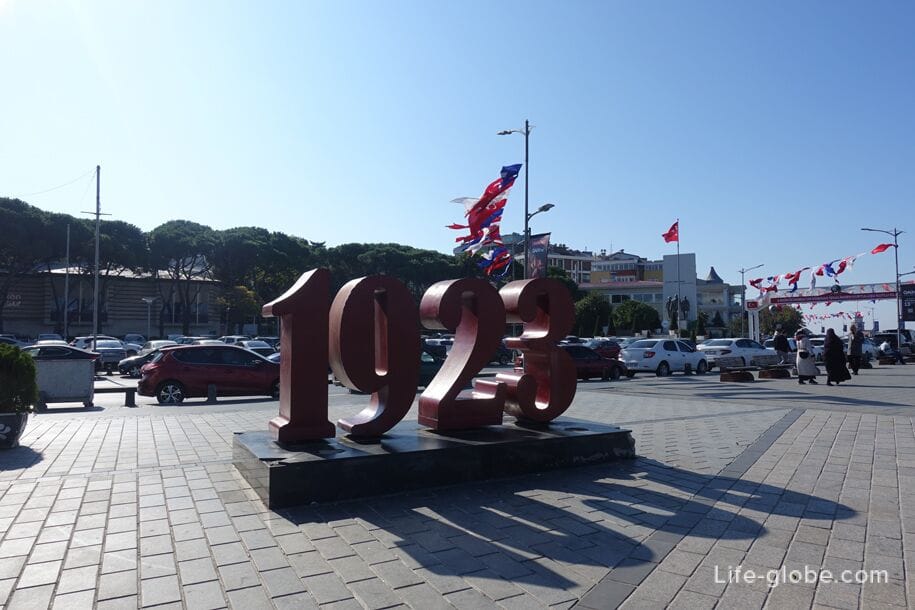
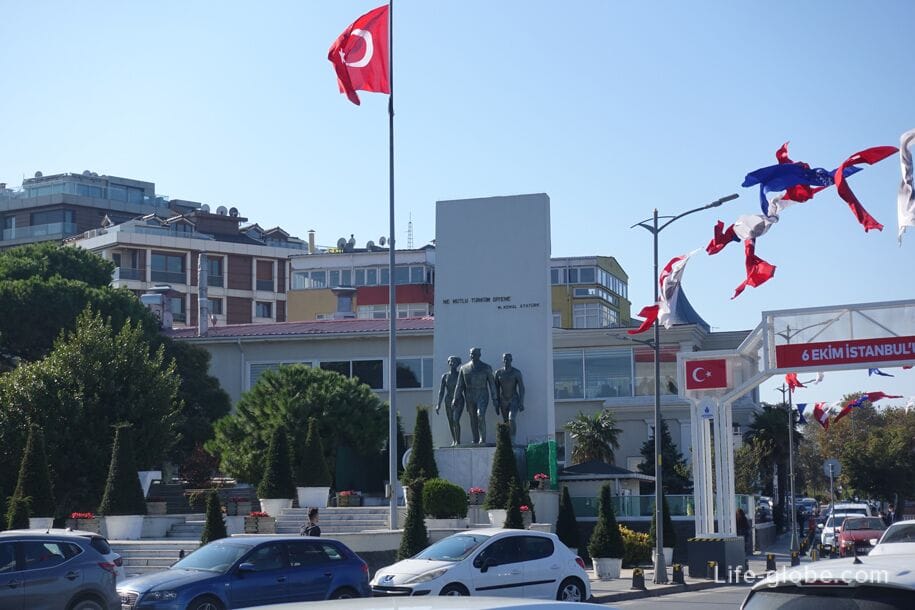
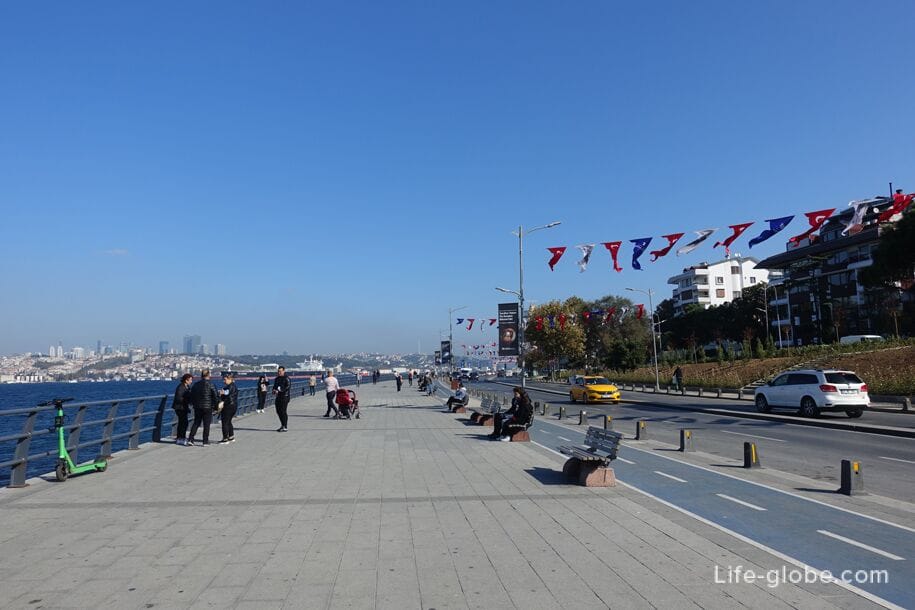
In the north-east direction along the waters of the Bosphorus in the Uskyudar area, the embankments are unoccupied areas where there are places for recreation and there are small park areas with playgrounds.
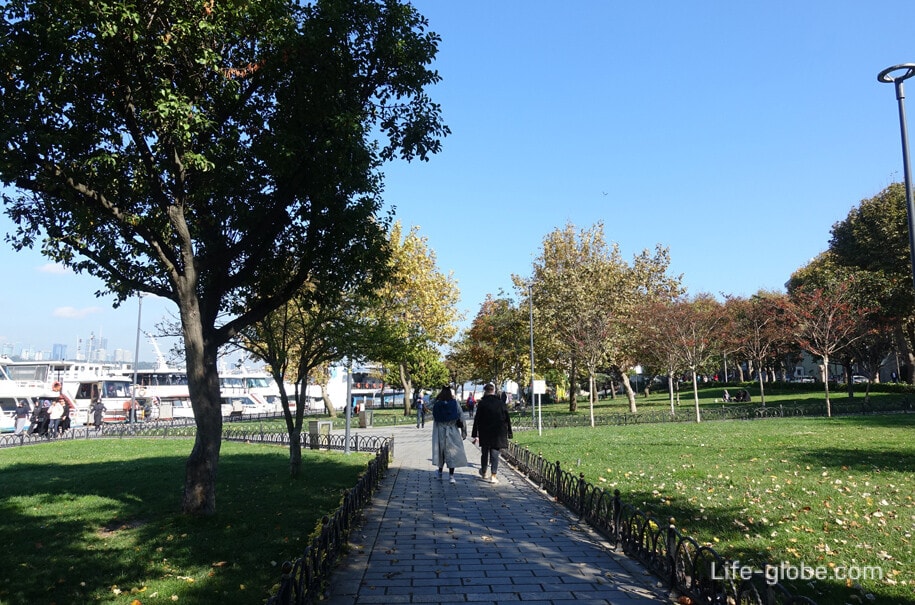
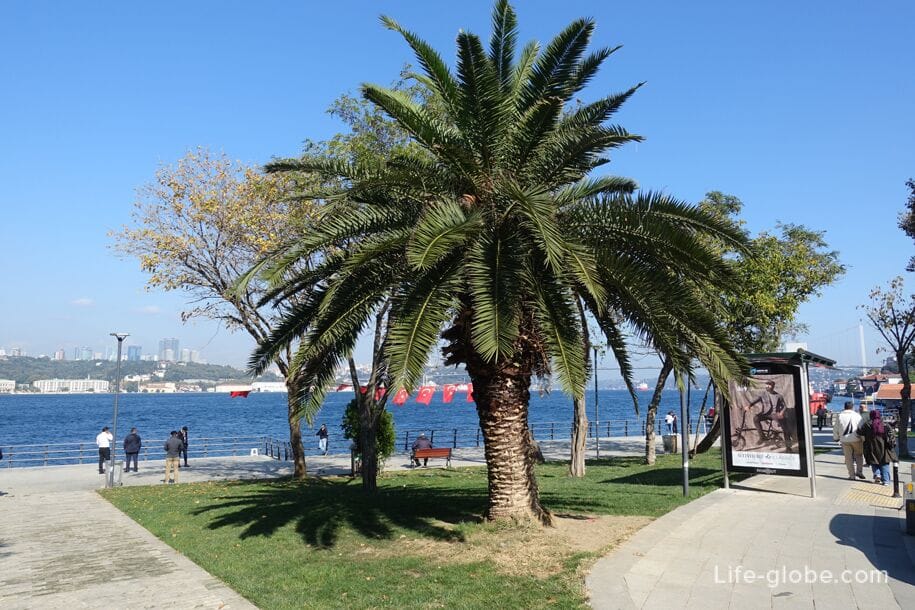
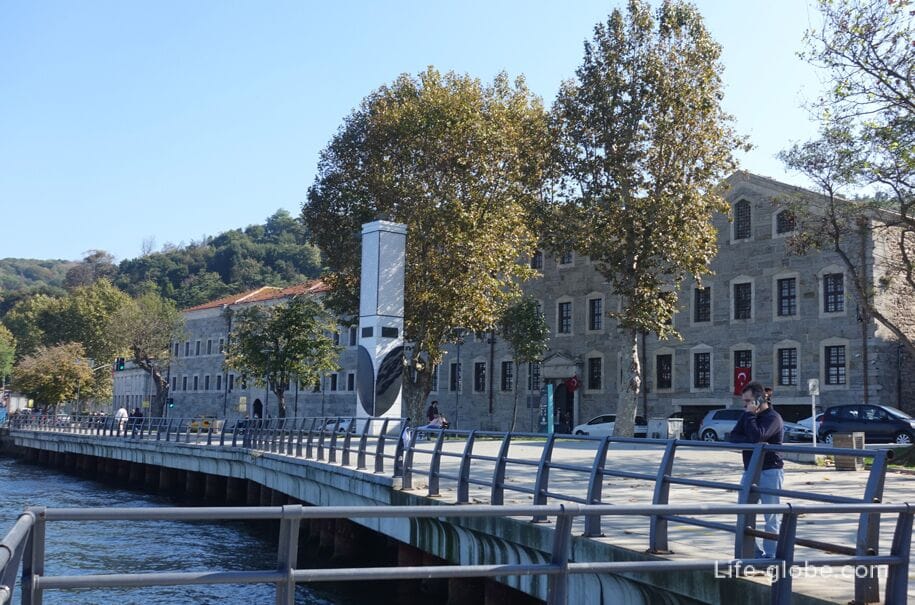
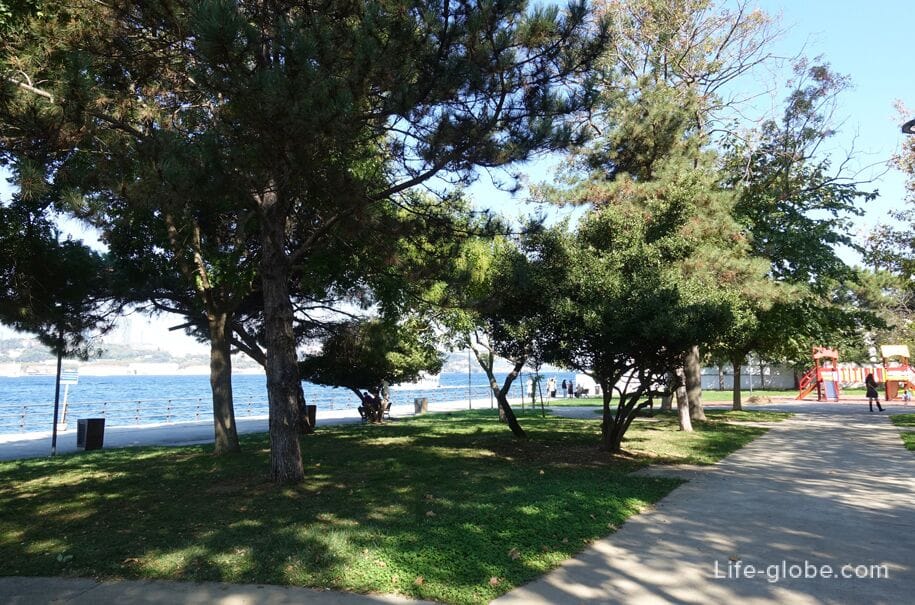
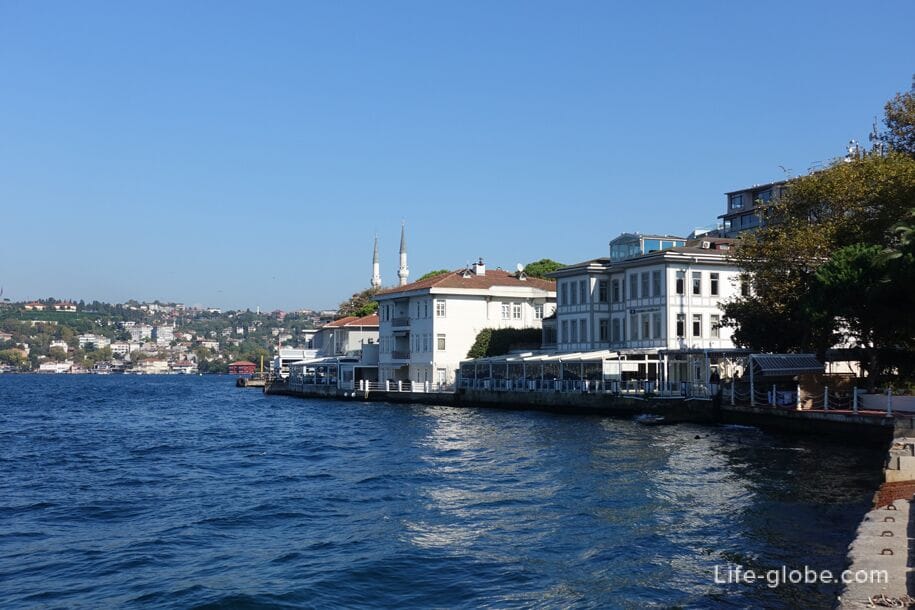
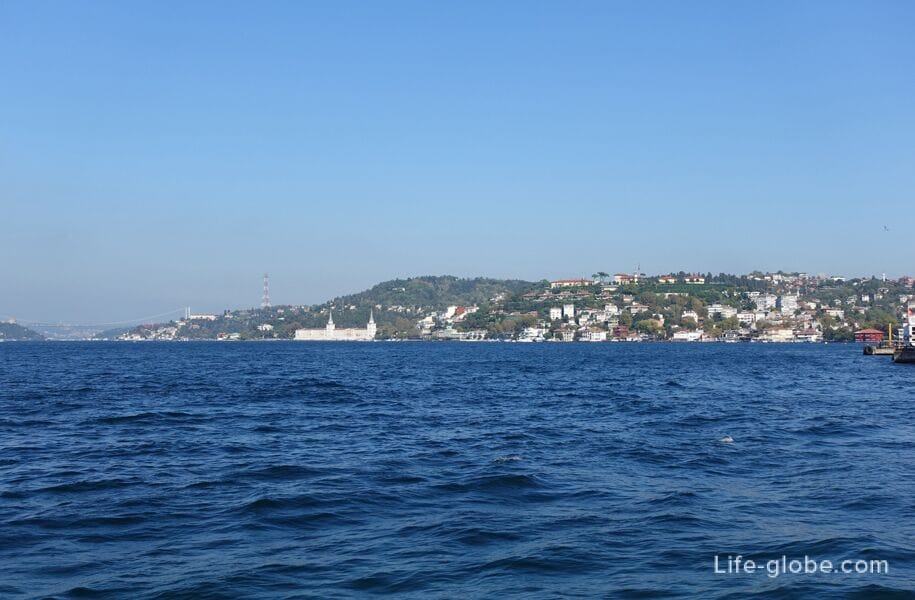

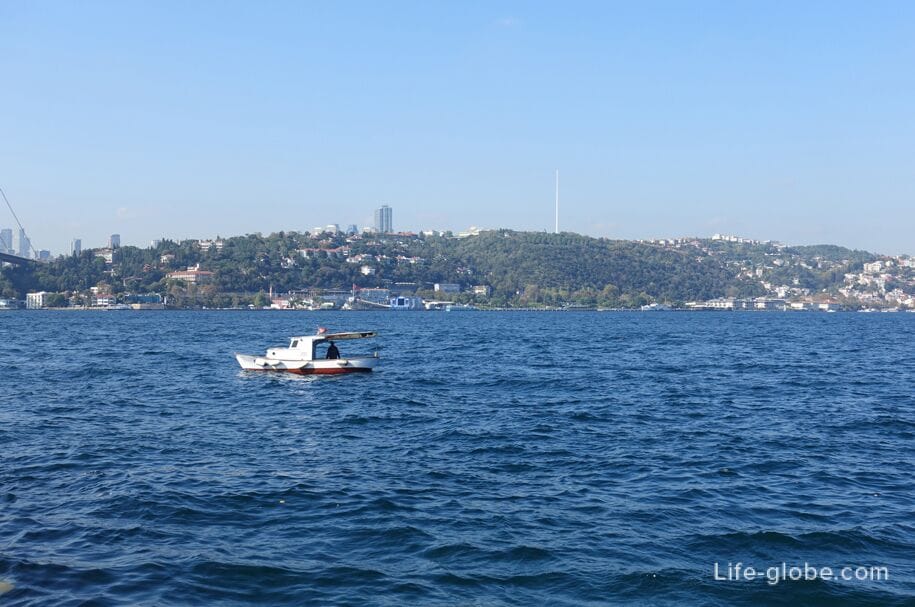
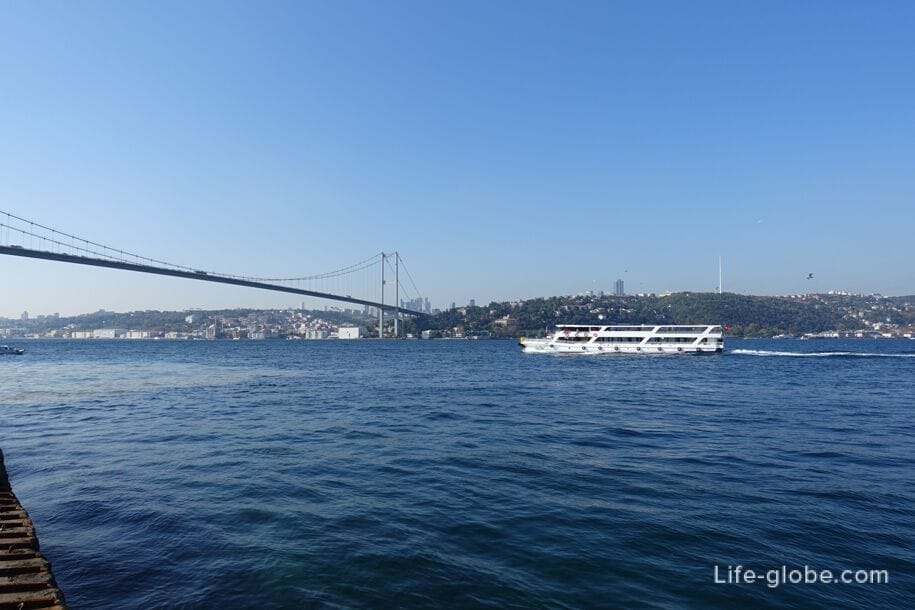
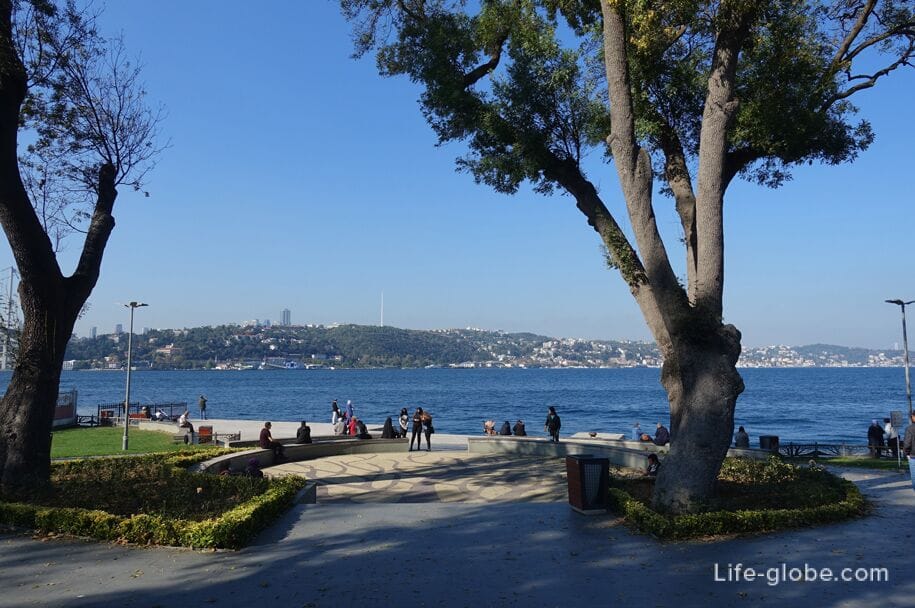
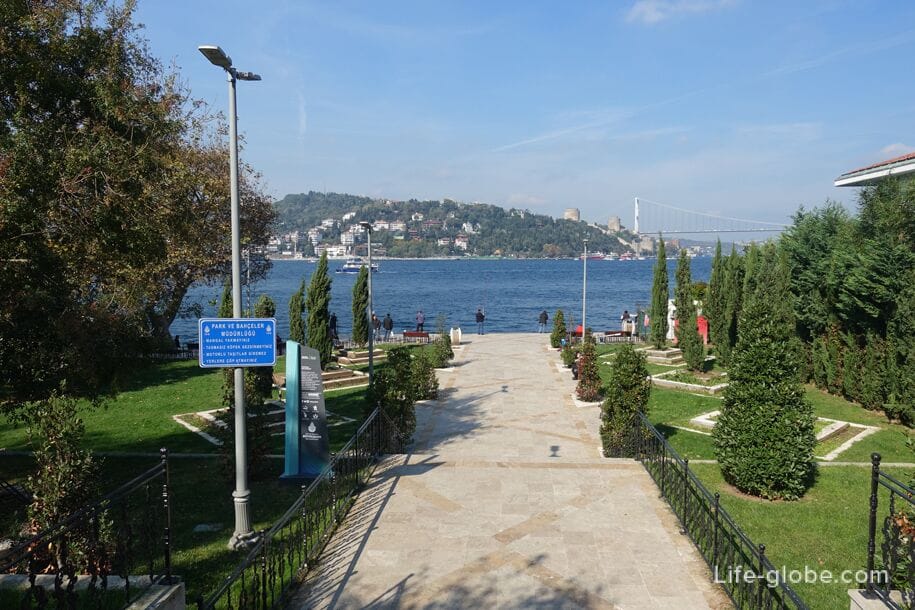
Maiden Tower (Kız Kulesi / Kyz Kulesi), also known as Leandrova Tower (Tower of Leandros) is a former lighthouse, which is now one of the main pearls and a symbol of Istanbul.
The tower is located on a small natural island in the waters of the Bosphorus Strait, a few meters from the shore of Uskyudar.
During its history, the tower has been a lighthouse, a prison and a quarantine isolation ward.
The tower suffered from earthquakes, fires and weather conditions, but it was always restored. The last major renovation of the Maiden Tower during the Ottoman Empire was carried out during the reign of Mahmud II. After the restoration in 1832-1833, the tower was given its current appearance.
Today the Maiden's Tower can be visited. Views of the Bosphorus and its shores open from here. Learn more about the Maiden Tower with photos, description and history...
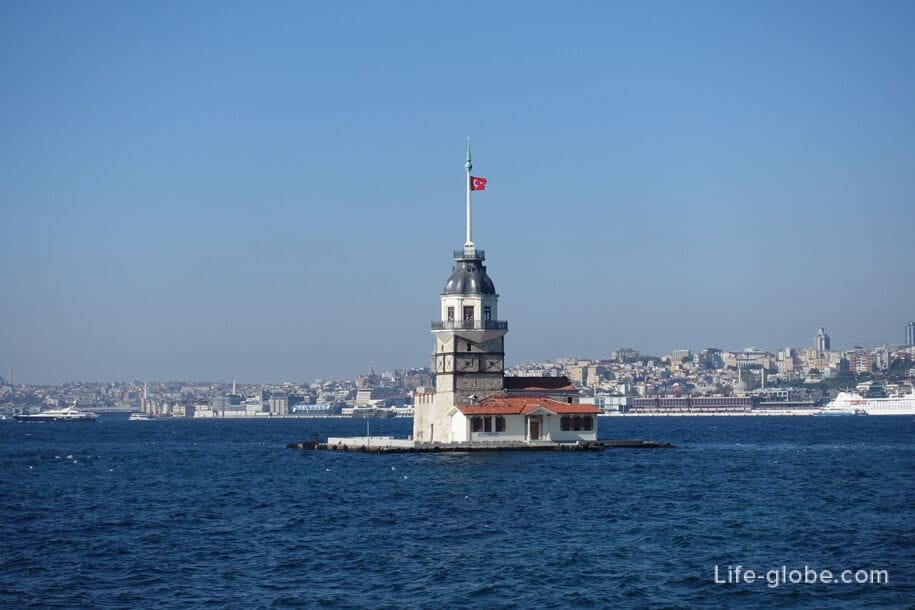
The mosque of Shemsi Ahmed Pasha (Şemsi Ahmed Paşa Camii) is one of the masterpieces of Istanbul, which is located near the waters of the Bosphorus and is very photographed.
They say that birds never land on this mosque, and this is due to the fact that the architect of the mosque, Sinan, designed it so that the roof of the shrine was exactly at the intersection of the winds, which birds are not able to cope with.
The mosque was built in 1580 at the expense of the ruler of Anatolia and Rumelia - Shemsi Ahmed Pasha.
The mausoleum of Shemsi Ahmed Pasha adjoins the mosque. The mosque complex also includes: madrasah, cemetery and courtyard. A minaret is attached to the southwest corner of the prayer hall.
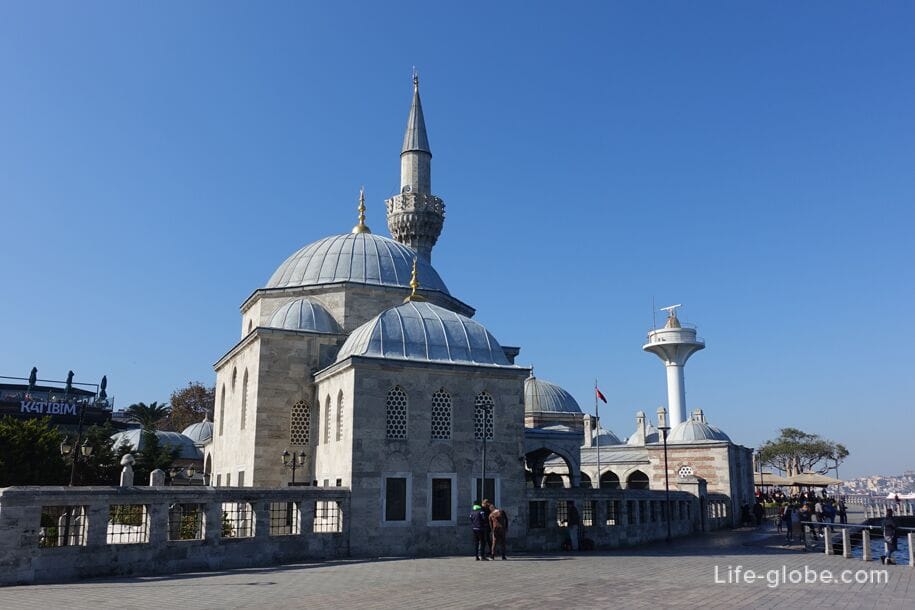
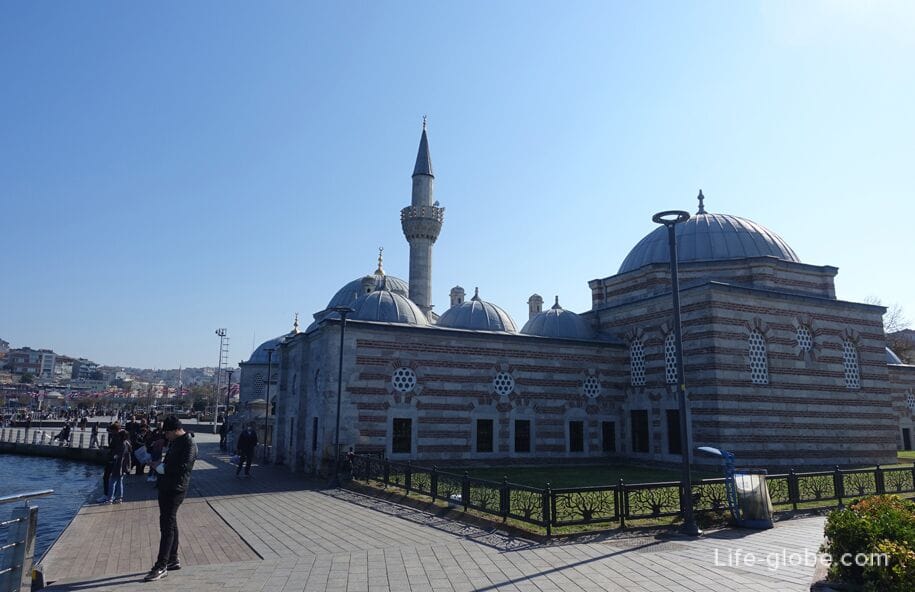
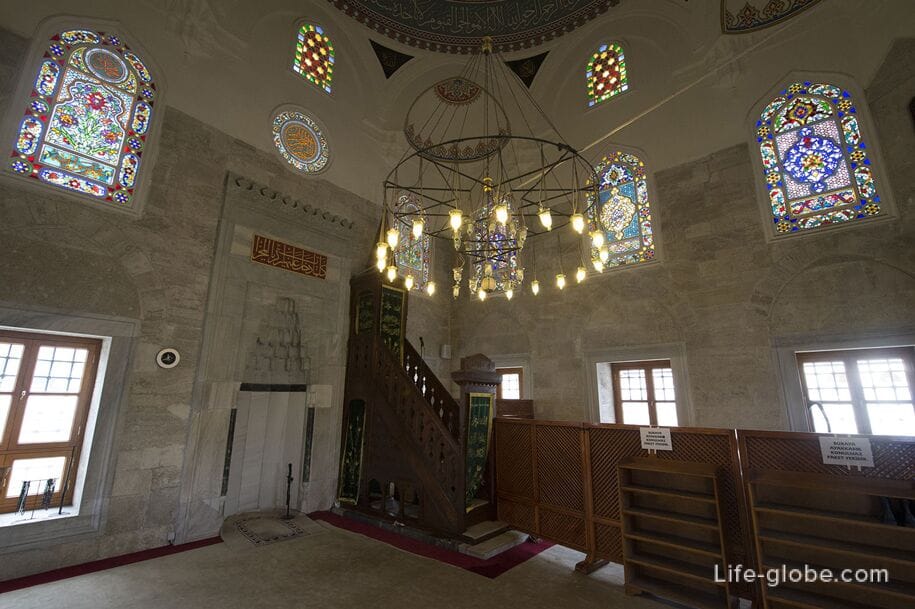
Mihrimah Sultan Mosque in Uskyudar (Mihrimah Sultan Camii) is an Ottoman mosque of the 16th century, built by order of Mihrimah Sultan, the daughter of Sultan Suleiman I and his wife Hurrem Sultan.
The open interior of the mosque is similar to the interior of Byzantine churches and early domed buildings of the Romans.
Between the buildings of the mosque and the madrasah, the graves of the two sons of Mihrimah and Rustem Pasha have been preserved.
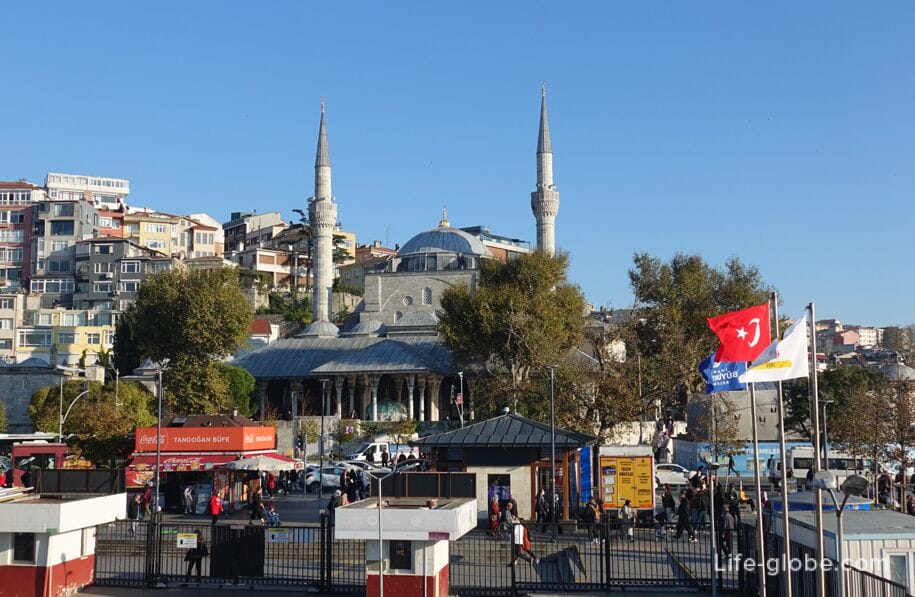
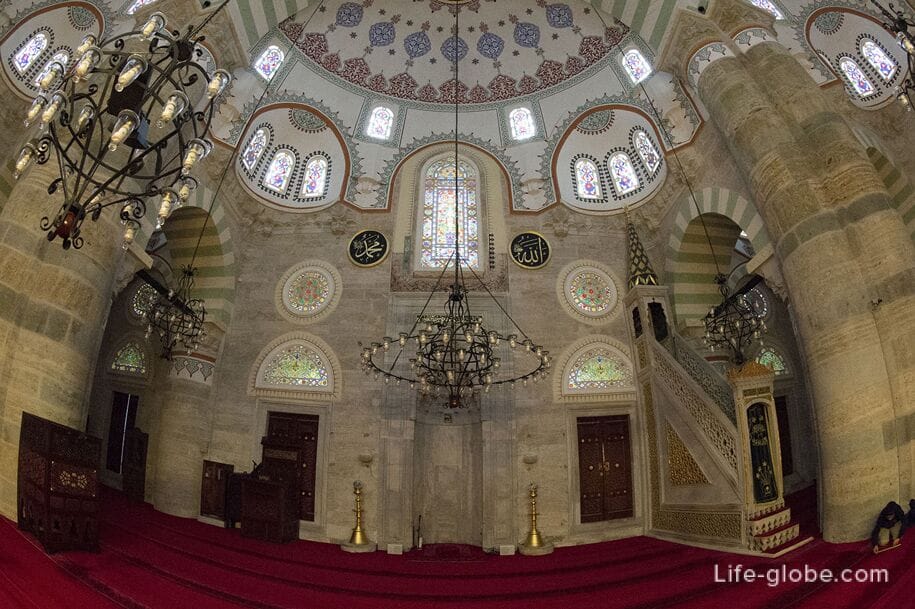
Fountain of Sultan Ahmed III (Üsküdar III. Ahmet Çeşmesi) was built in 1728-1729 in the Ottoman Rococo style by order of the Ottoman Sultan Ahmed III.
The fountain was consecrated and dedicated to the Sultan's mother, Emetullah Rabie Gulnush Sultan, who was buried in Uskyudar.
The Sabil fountain was a public one and was built to provide travelers with drinking water and running water for ritual ablution of worshippers.
Initially, the fountain was located right on the embankment of the Bosphorus, for the convenience of servicing travelers crossing the strait. But during the redevelopment of the square in 1932-1933, the fountain was dismantled and moved to the center of the nearby square next to the Mihrimah Sultan Mosque. The fountain has also undergone major renovations.
The fountain has the shape of an octagonal prism with four wide facades and four narrow corner facades. The hipped roof in the shape of a square pyramid has wide cornices on all sides. The fountain is built of solid white marble with a wooden roof covered with lead sheet.
In the fountain, he eats taps for ablutions, and, installed above, drinking taps.
The fountain has a number of relief decorations with floral motifs, flourishes, carved ornaments, Arabic inscriptions, and in each of the eight corners of the fountain there is a Solomon column topped with a Corinthian order. The inscription on the main facade contains verses by both Sultan Ahmed III himself and his son-in-law, Grand Vizier Nevsehirli Damat Ibrahim Pasha. The inscription was written in the style of Islamic calligraphy of Jeli Tulut by Sultan Ahmed III himself, who was fond of poetry and calligraphy.
Another monumental fountain of Ahmed 3 is in Sultanahmet of Fatih district of Istanbul (on the European side of the city).
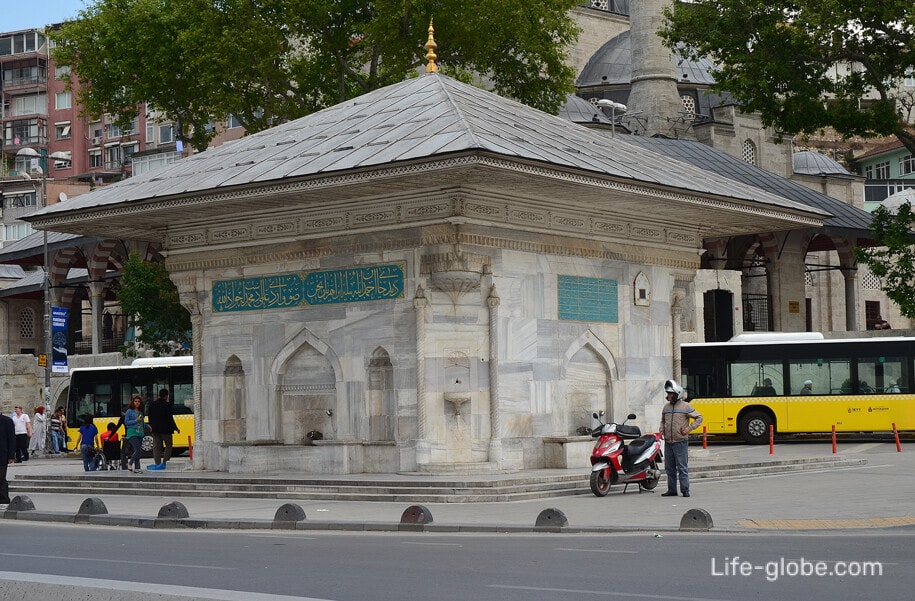
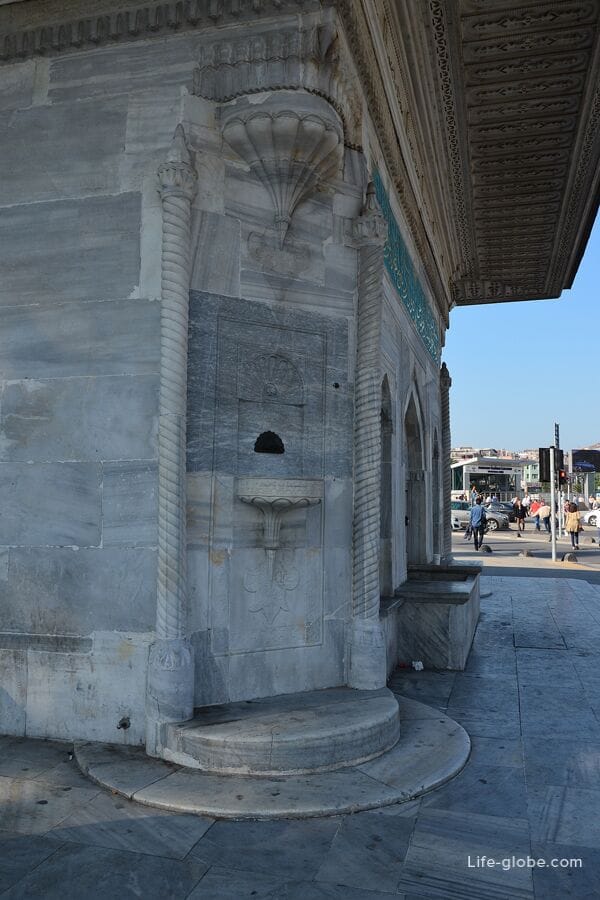
The big hill of Chamlyja (Çamlıca Tepesi) is a high hill (288 meters) on the top of which the Chalmıca Mosque of the same name (Çamlıca Mosque) is located.
The Chalmidja Mosque (Büyük Çamlıca camii) is the largest mosque in Istanbul, which is new, its construction was completed in 2019.
This mosque has six minarets, which represent the six symbols of the Islamic faith.
From the open terrace of the mosque and from the hill there are wonderful panoramic views of Istanbul.
In the public park on the hill with trees, flower beds and fountains there are historical teahouses, cafes and a restaurant.
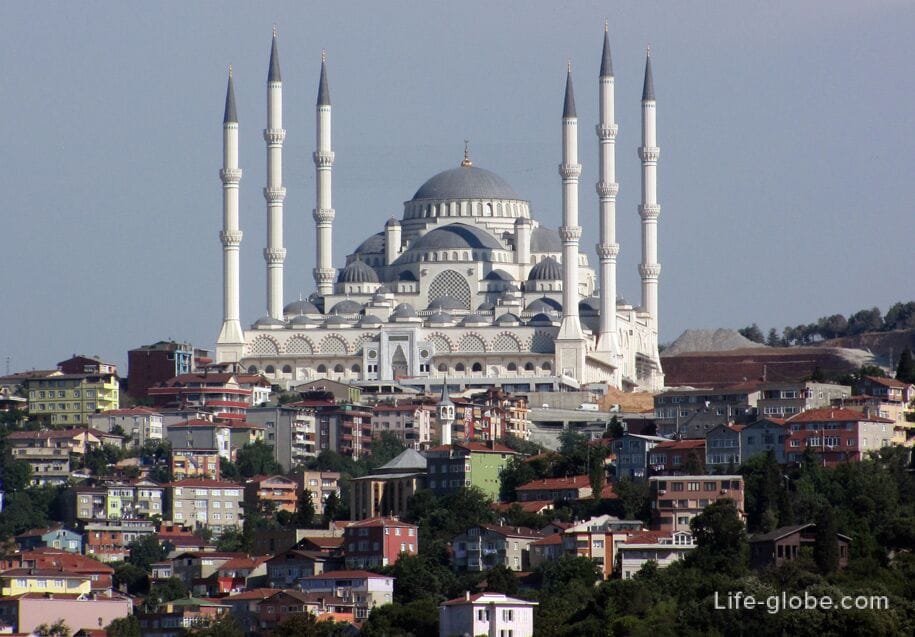


The Chamlyja TV Tower (Çamlıca TV Radyo kulyesi, Çamlıca Kulesi / Camlica Tower) has a modern architecture and a height of 369 meters (and 587 meters above sea level), consists of a total of 49 floors, of which 4 are underground and 45 are above ground.
In addition to media, radio and television broadcasting services, the tower also provides infrastructure services to wireless operators and general tourist services.
There is an observation deck in the tower, giving a 360-degree panoramic view of the whole of Istanbul and the surrounding area. There is also a panoramic cafeteria-restaurant in the tower.
The ascent to the observation deck is paid.
TV tower address: Küçük Çamlıca Çilehane Yolu Caddesi Oyma Sokak, D:No:1, 34696 Üsküdar, Turkey.
TV tower website: camlicakule.istanbul. Learn more about the observation decks of Istanbul...


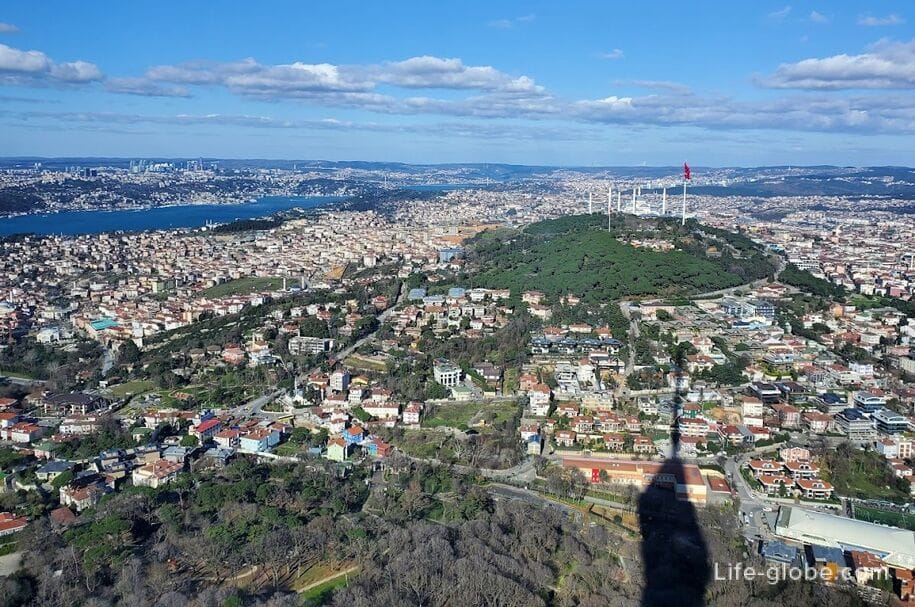
The Beylerbeyi Sarayı Palace is a 19th-century neo-Baroque palace that served as a summer residence and accommodation for high-ranking guests of the sultans of the Ottoman Empire.
The first wooden palace on the current site, known as the "Divergent Garden", was erected by order of Sultan Mahmud II in 1808-1839. After the destruction of the wooden building due to a fire, by order of Sultan Abdul-Aziz in 1863-1865, a new palace was erected, which acquired its current appearance.
Since 1912, the palace was the last residence of the deposed Sultan Abdulhamid II. Within the walls of the palace, the Sultan died in 1918.
Today the palace is a museum, which is a palace complex, which includes the main building of the palace with recreated interiors, as well as the surrounding garden with terraces, pavilions, sculptures, a fountain and a cafe.
The gardens of the Beylerbeyi Palace also attract attention by the fact that they have access to a terrace near the waters of the Bosphorus, which is used as an observation deck.
Entrance to the Beylerbeyi Palace is paid.
The address of the palace: Beylerbeyi, Abdullahağa Cd., Istanbul.
Beylerbeyi Palace website: beylerbeyi-sarayi. More about the Beylerbeyi Palace with gardens and a terrace by the Bosphorus Strait...
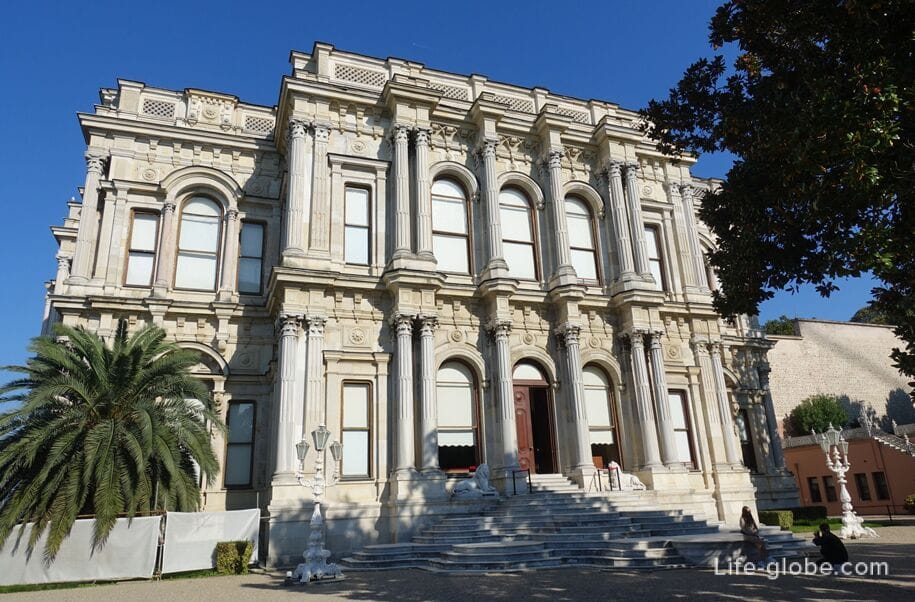
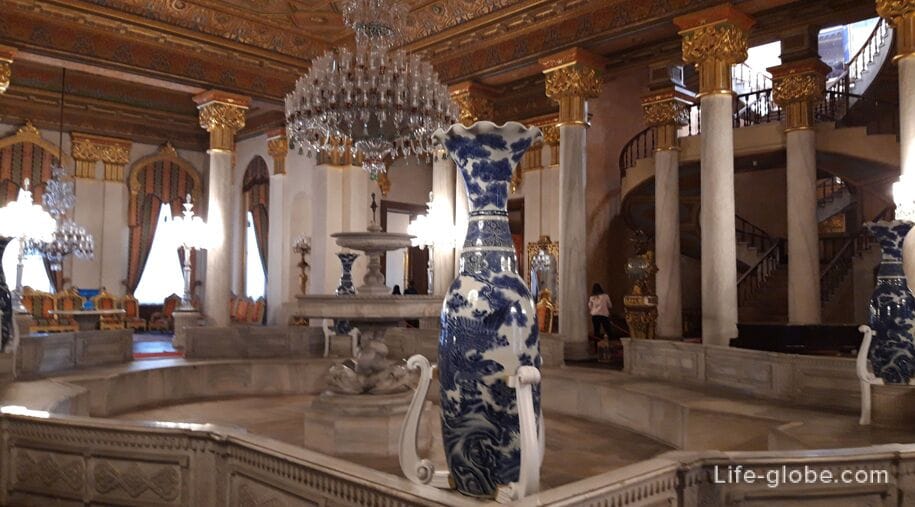
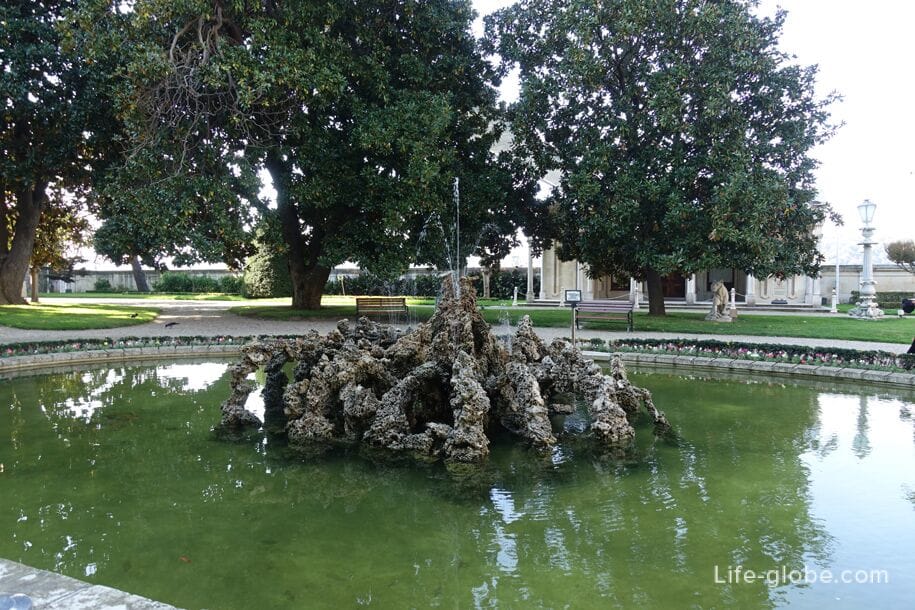

Beylerbey Mosque or Hamid-i-Evvel Mosque (Beylerbeyi camii, Hamid-i Evvel Camii) is an 18th-century sultan mosque, which is one of the most impressive mosques on the Asian side of Istanbul and is considered one of the most beautiful manor mosques in the city.
The mosque building was built by Sultan Abdulhamid I in memory of his mother Rabia Sermi Sultan, in the place where part of the former Beylerbeyi Palace was located. The mosque opened its doors for worship on August 15, 1778.
Since the mosque is located near the waters of the Bosphorus and suffered from constant water flows, it was changed during the reign of Mahmut II.
Mosque address: Beylerbeyi, 34676 Üsküdar/Istanbul, Turkey.
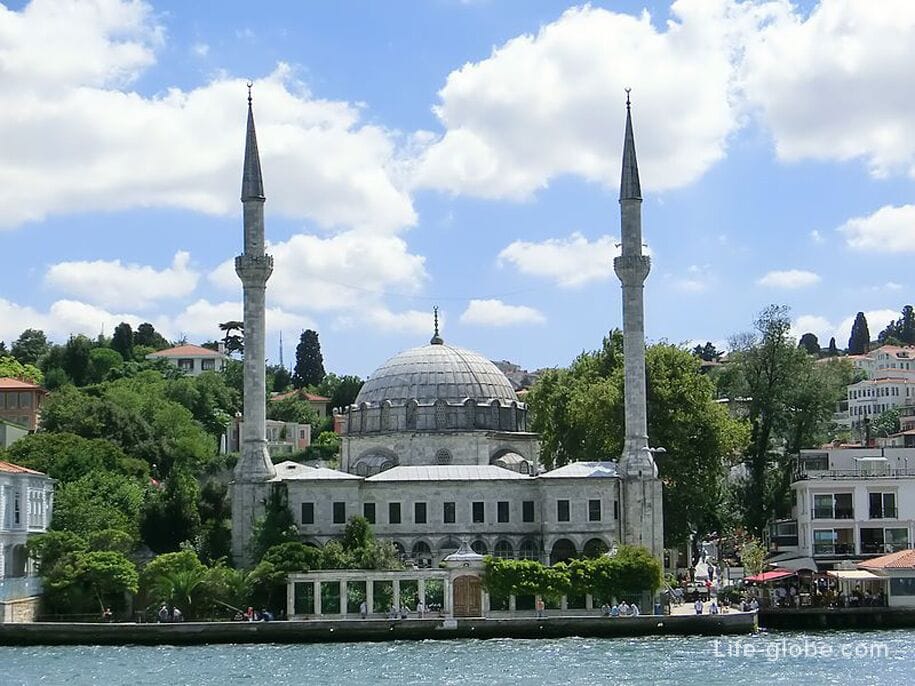
Adile Sultan Palace (Adile Sultan kasrı) is a former imperial residence built in the second half of the 19th century by decree of Sultan Abdulaziz for his younger sister Adile Sultan.
Now the palace has been restored and is a cultural and educational center, where conferences, banquets and weddings are also held.
Pavilion address: Barbaros, Tophanelioğlu Cd. No:72, 34662 Üsküdar/Istanbul, Turkey. More about the palaces of Istanbul...
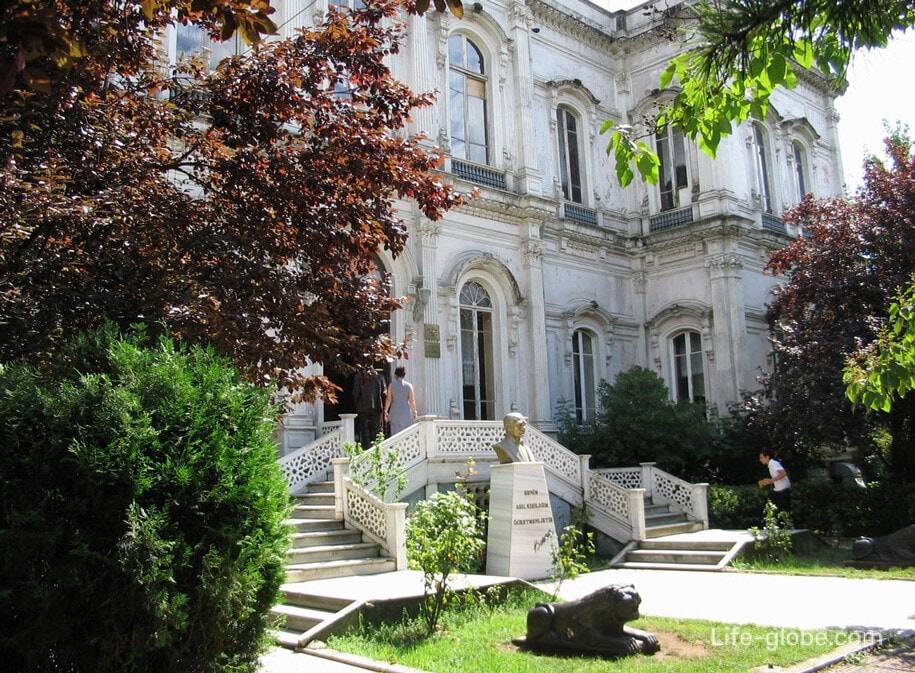
Ayazma Mosque or Ayazma (Ayazma Cami) is a historical mosque of the Ottoman period, built in 1758 - 1761 by Sultan Mustafa III, who dedicated the shrine to his mother Mihrisha Emina-Sultan Khatun and his elder brother Shehzade Suleiman.
The name "Ayazma" was given to the mosque in honor of the fountain located in its courtyard.
The architecture of the mosque reflects the influence of the Ottoman Empire and the Baroque.
The mosque's minaret, destroyed by lightning, was rebuilt in 1872 and 1881.
There are tombs at the mosque.

Selimiye Barracks (Selimiye Kışlası), also known as Scutari Barracks (Scutari Kışlası) are the largest Ottoman barracks built during the reign of Sultan Selim III during the reforms known in Turkish history as "Nizam-i Jedid" (New Order), which were carried out in order to catch up politically and militarily developed European states.
The barracks were built since 1799 according to the project of Krikor Balyan and were originally wooden on a stone foundation. The barracks housed units of the new Turkish regular army.
In 1806, during the uprising of the Janissaries who opposed the reforms and deposed Selim III, the barracks were burned.
The barracks were rebuilt in 1825-1828 by order of Sultan Mahmud II.
During the Crimean War (1854-1856), the barracks were allocated to the British Army, which was on its way from Britain to the Crimea. After the British military left for the front, a temporary military hospital was established in the barracks, where Florence Nightingale arrived with 37 volunteer nurses on November 4, 1854. They took care of wounded and cholera-infected soldiers. The dead were buried in a plot next to the barracks, which later became the Haidarpasha Cemetery.
Today, the barracks are a monument of history and architecture, and serve as the headquarters of the first army of the Turkish Ground Forces.
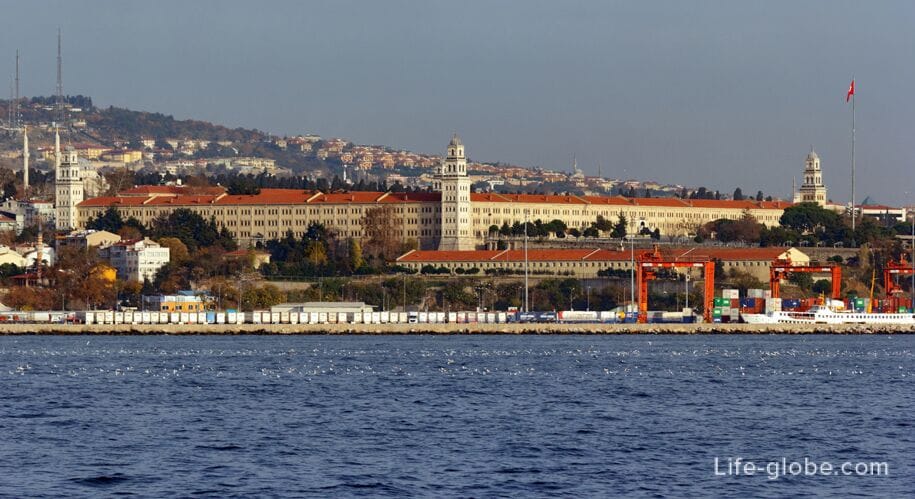
The Selimiye Grand Mosque (Büyük Selimiye Camii) is located near the Selimiye barracks and in translation the name of the shrine means "The Great Mosque of Selim".
This is a historical mosque, built by order of the Ottoman Sultan Selim III in Ottoman architecture with a combination of Baroque style. The construction dates from 1789 (1801) - 1805 (1807) years.
The columns of the mosque's arcades have ionic capitals.
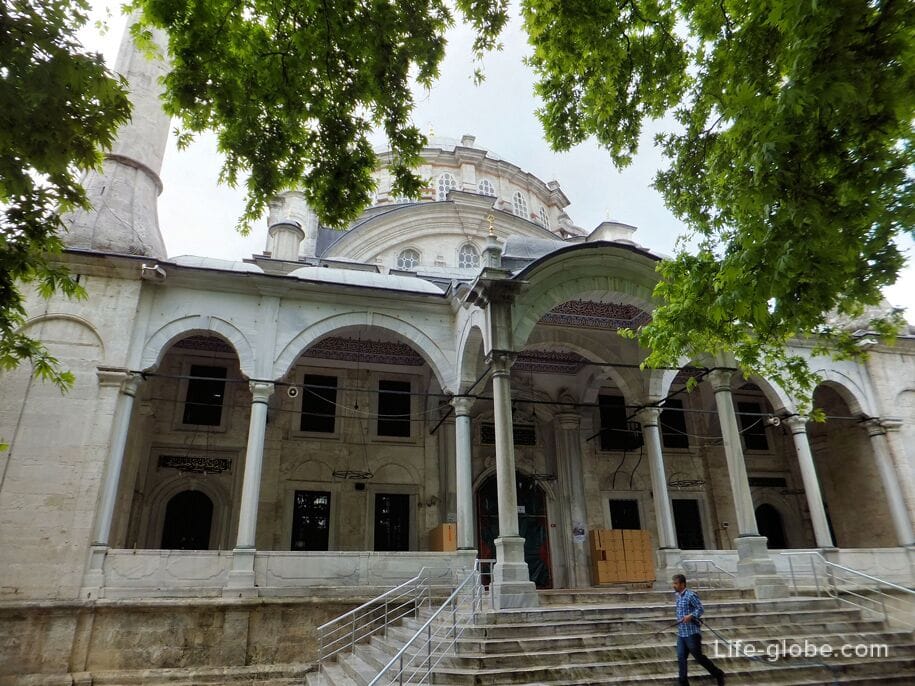
The mosque attracts attention with one minor detail that was characteristic of the 18th century - these are small ornate birdhouses carved from stone and located on the outer sides of the corner towers.
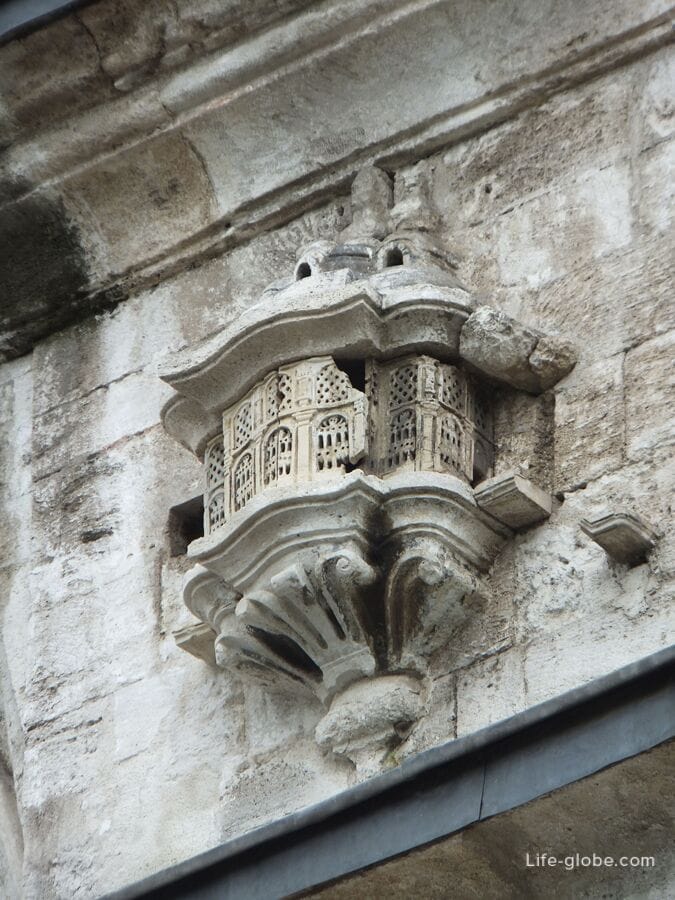
The interior of the mosque is notable for marble decoration, stucco and rich Baroque carvings.
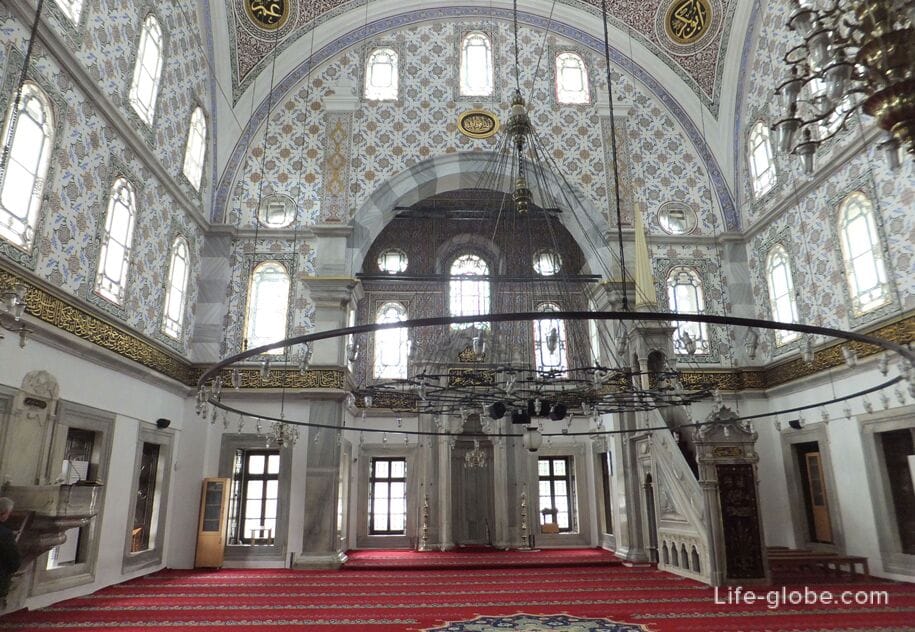
Atik Valide Mosque or Eski Valide (Atik Valide Camii, Eski Valide Camii, which means "The Old Mosque of the Sultan's Mother") is a complex of buildings of the Ottoman imperial mosque of the 16th century with colorful decoration and a cozy courtyard.
The mosque was built in 1571, and then expanded and completed. A shrine was built for Afife Nurbanu-sultan, concubine, and then wife of the Ottoman Sultan Selim II, mother of Murad III and the first Valide-sultan of the Sultanate of women period.
The mosque was one of the largest mosque complexes in the city, which included: the mosque itself, a madrasah, schools, a dervish monastery, a hammam, a hospital and an almshouse, which housed a guest house and a double caravanserai.
There is a large fountain for ablutions in the courtyard of the mosque, and the interior of the mosque hall is decorated with marble and Iznik mosaics with floral motifs.
Mosque address: Validei Atik, Toptaşı Meydan Sk. No:1, 34664 Üsküdar/Istanbul, Turkey.
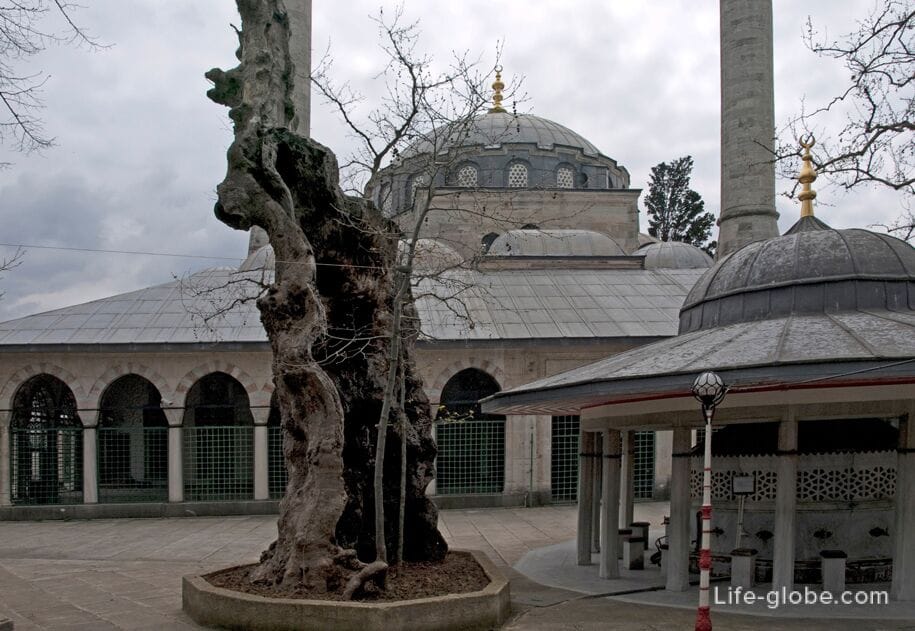
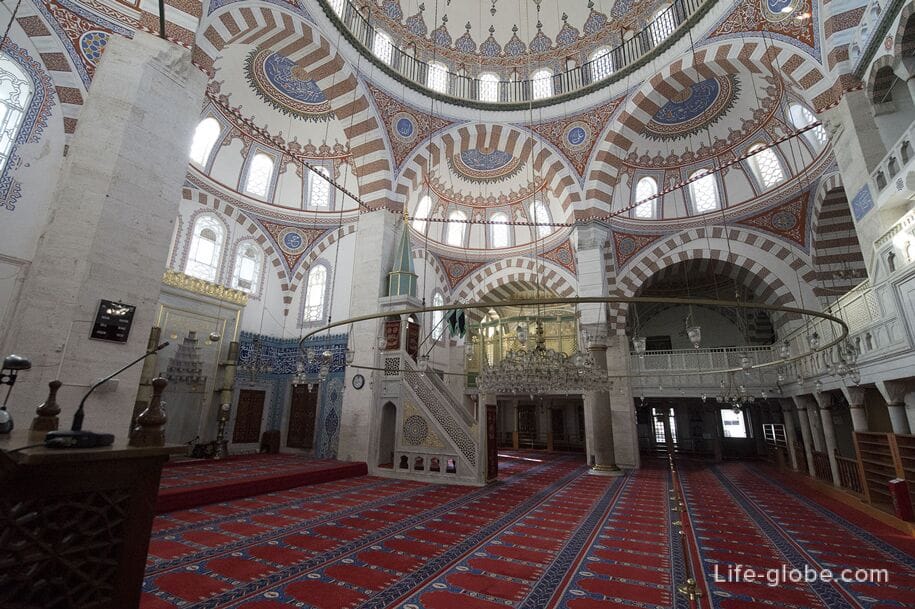

The Yeni Valide Mosque or Yeni Valide (Yeni Valide Camii) is an Ottoman mosque of the 18th century, the construction of which took place in 1708-1710 by order of Sultan Ahmed III in honor of his mother Emetulla Rabi'a Gulnyush Sultan.
It was a complex consisting of an imaret (hospice), an arast, an elementary school, the tomb of Emetullah Rabi'a Gulnyush Sultan, a shadirvan courtyard with a fountain for ablutions, a muvakkitane (clock tower) and auxiliary rooms.
The mosque is made in typical Ottoman religious architecture. The main part of the building has a square shape and is covered with a flattened main dome and semi-domes. The mosque has two minarets with two balconies each.
Inside the mosque, the eye-catching and large patterns of floral motifs, as well as calligraphy by Hezarfen Mehmet Efendi, are noteworthy.
Mosque address: Mimar Sinan, 34664 Üsküdar/Istanbul, Turkey.
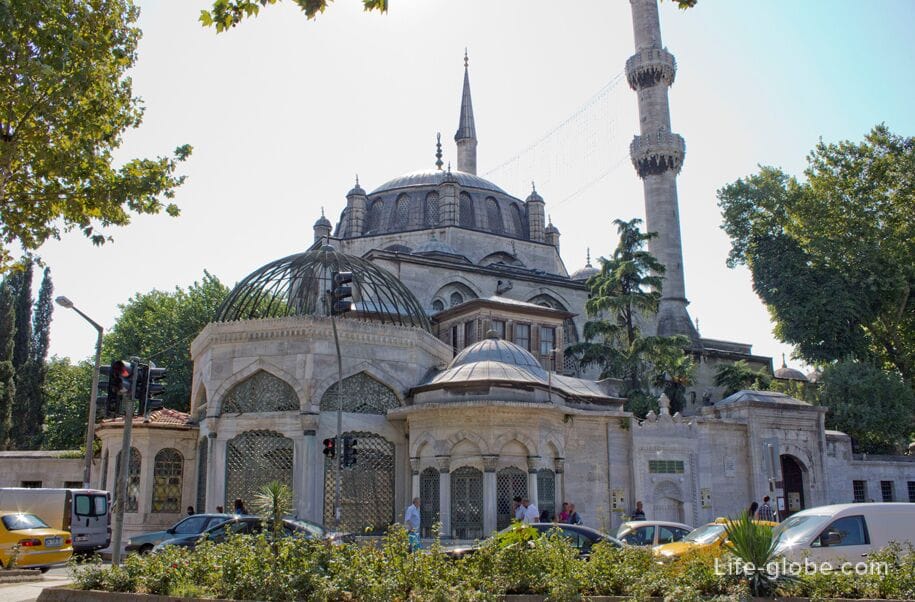
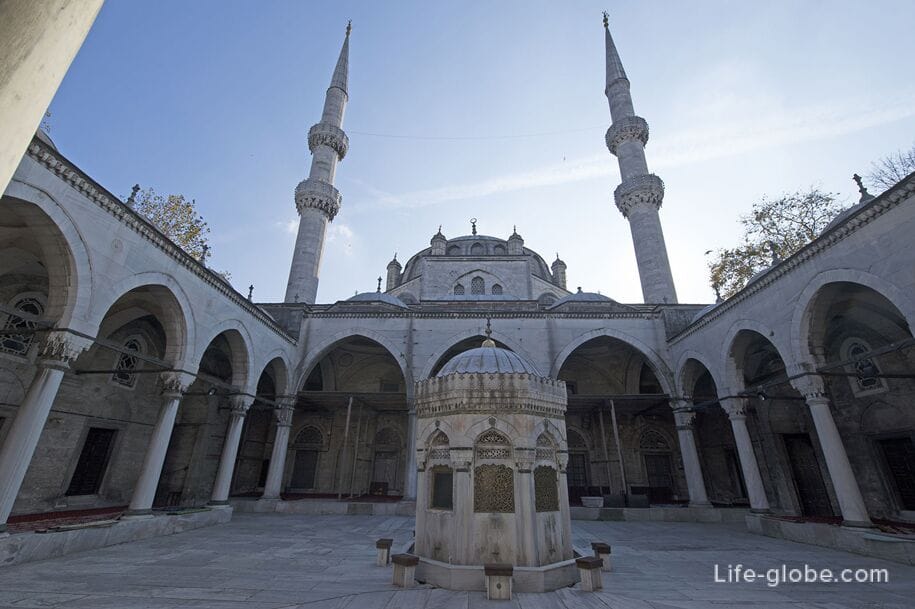
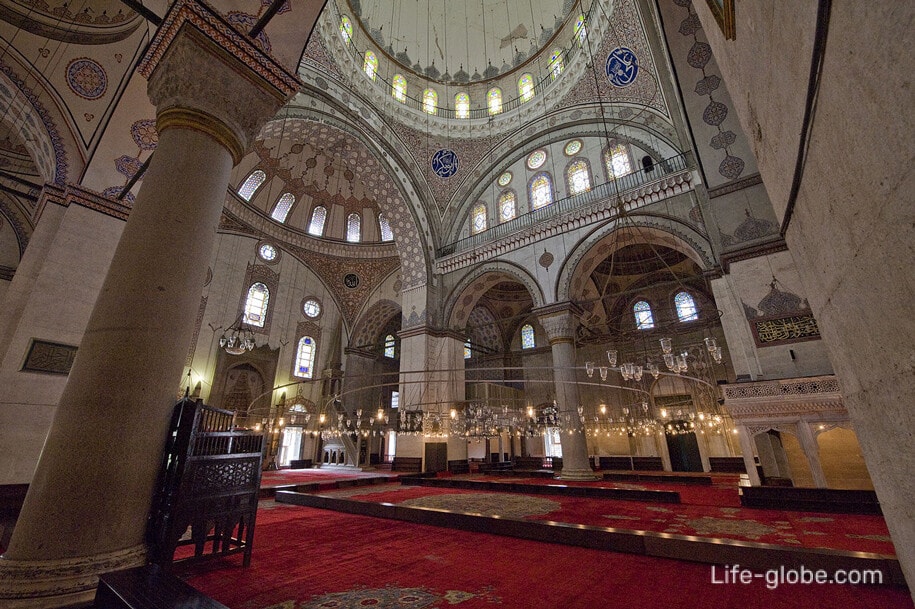
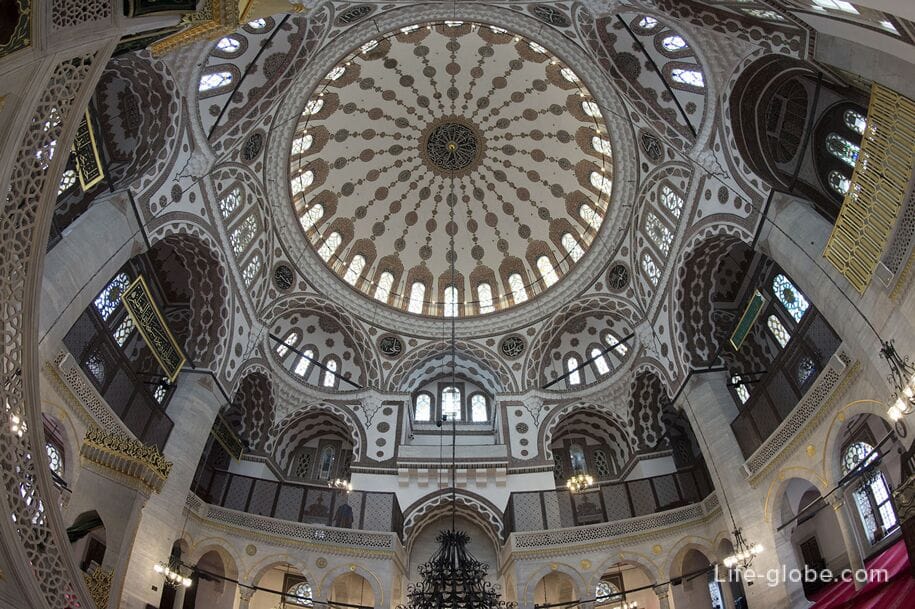
The Chinili Hammam or "Tiled Bath" (Çinili Hamamı) is a traditional Turkish bath of the 17th century, open to the public today, with wood-burning heating and massage services.
The hamam was built by the decree of Sultan Ahmed I's wife - Kesem Sultan in the 1640s simultaneously with the nearby "tiled" mosque of Chinili (Çinili Cami).
The tiles from the hamam were stolen in the 18th century, but the owners of the building decorated the facade and interior with blue tiles for a long time.
This hamam was inferior and is inferior in area and decoration to other historical baths of Istanbul, but it still retains its atmosphere as before due to a marble fountain with goldfish, wooden details in the interior and a wood-burning heating system.
Address of the hammam: Çavuşdere Cad. Muratreis Mah. No: 204 Üsküdar / İSTANBUL.
Hammam website: cinilihamam.com .
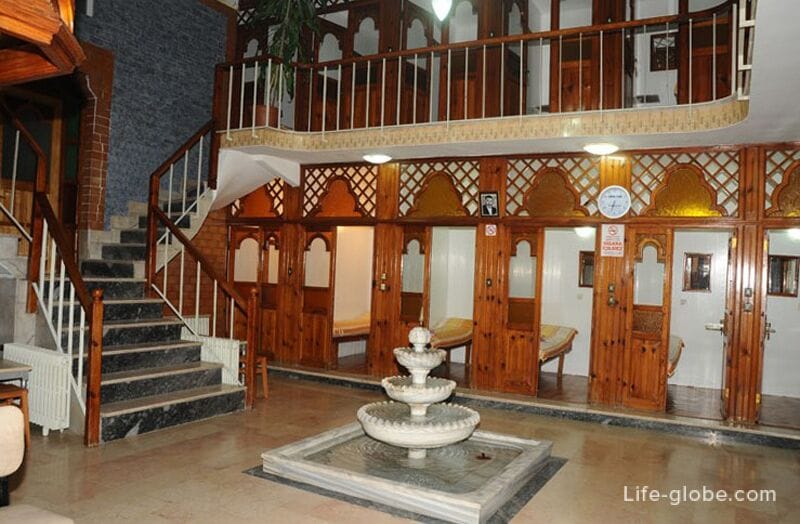
The Chinili Mosque or Tiled Mosque (Çinili Camii), also known as the Orta Valide Mosque (Orta Valide Camii) or the Mahpeyker Kösem Valide Sultan Mosque (Mahpeyker Kösem Valide Sultan Camii) is a historical mosque built during the Ottoman Empire.
The mosque, like the hammam was repaired, was built by Mahpaker Kesem Walide Sultan, who was the wife of Ahmet I.
The construction of the mosque was started in 1638. The opening for worship took place in 1640.
The architecture of the mosque reflects the Ottoman influence. Later, a madrasah, a fountain, a school and a hammam were built near the mosque.
The founder of the mosque, Mahpaker Kesem Walide Sultan, is buried in the tomb of her husband - the mausoleum of Sultan Ahmed I, which is near Blue Mosque.
Over time, the mosque was destroyed and then repaired. Learn more about Istanbul mosques...
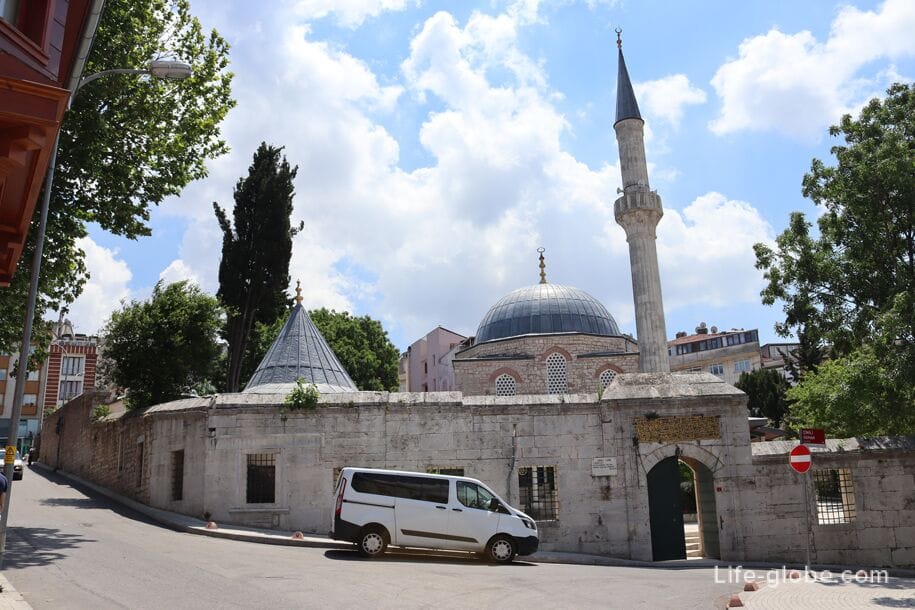
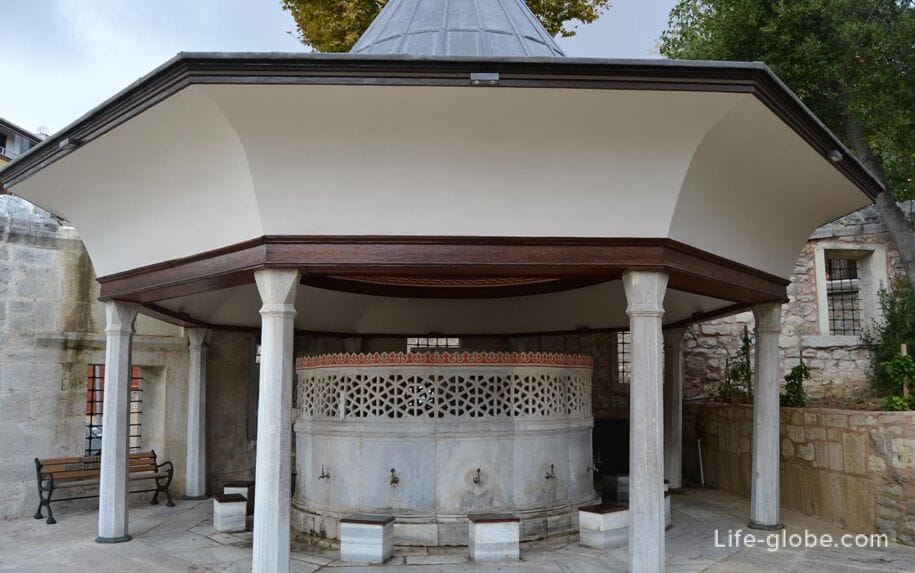
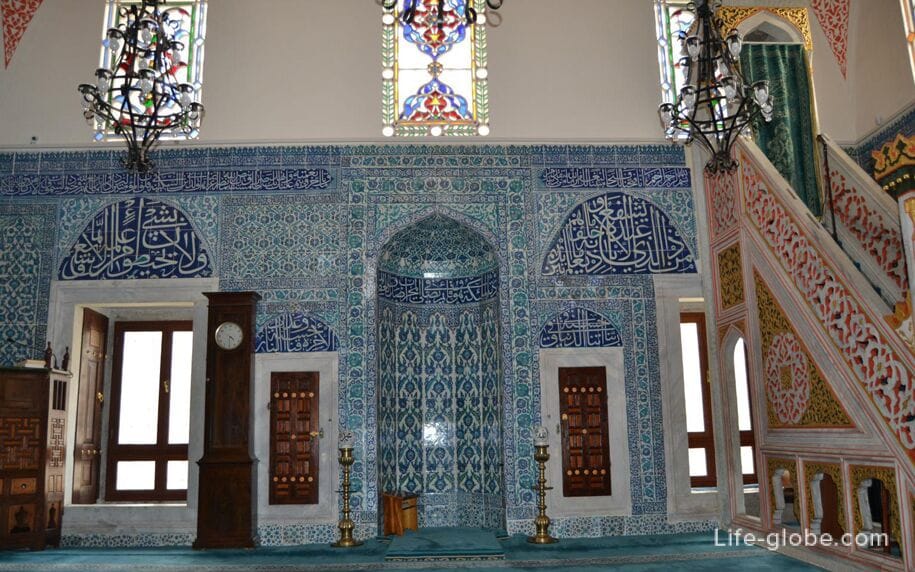
Hammam Yuskyudar Shifa (Tarihi Üsküdar Şifa Hamamı) is one of the oldest hammams in Istanbul, which is called a healing historical bath and is also referred to as the "Old Hammam".
The construction of the hammam dates back to 1640 and it has preserved its historical appearance with a dome and traditional forms.
The hammam services include massages.
The address of the hammam: Şifa Hamamı Sokak No: 24 Sultanahmet / ISTANBUL.
Hammam website: sifahamami.com. Learn more about the hammams of Istanbul...
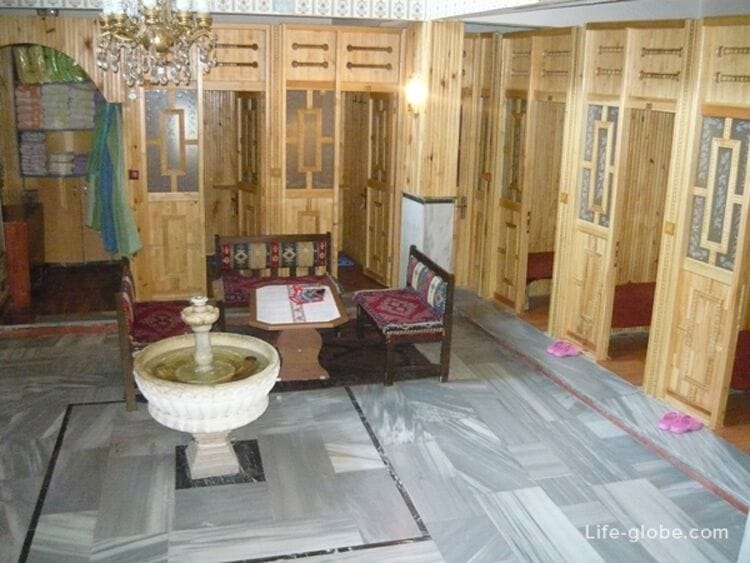

Istanbul Jazari Museum (Istanbul Cezeri Muzesi) holds exhibitions and museum programs aimed at introducing and attracting the attention of visitors to the world cultural heritage in the fields of history, science, art and culture.
Museum address: Altunizade, Mahir Iz Cd. No: 30/1, 34500 Üsküdar/Istanbul, Turkey
The museum's website: cezerimuzesi.com .

The Kite Museum (Uçurtma Müzesi) was created by Mehmet Aaji Akoz, who dedicated his life to kites and headed the Istanbul Kite Association.
The museum displays kites brought from different countries of the world.
There are small workshops at the museum, where children are helped to construct the simplest kites at master classes.
Museum address: Aziz Mahmut Hudayi Mah. Uncular Cd. Bakıcı Sk. No: 12 USKUDAR – ISTANBUL.
The museum's website: ucurtmamuzesi.net .
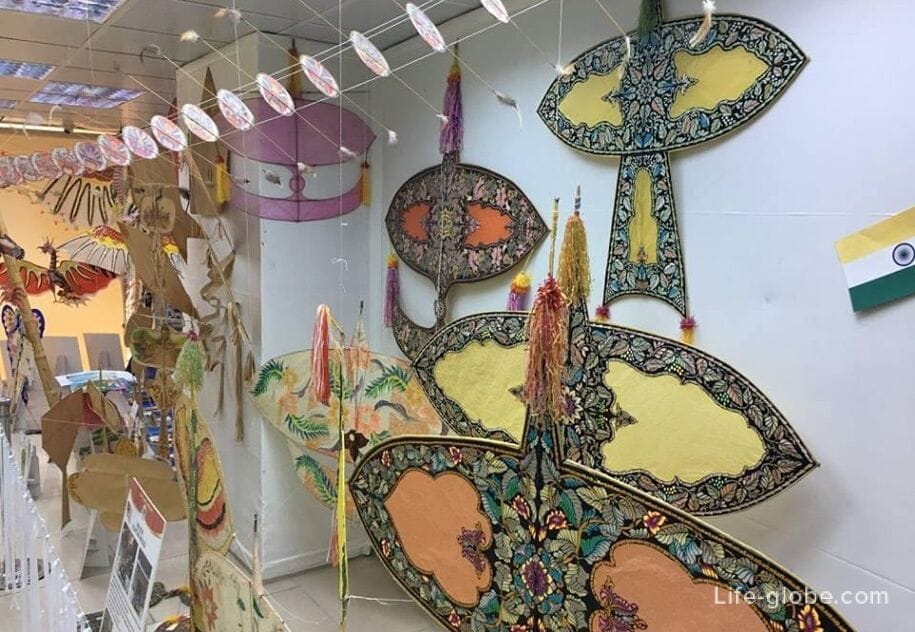
The Hababam Class Museum (Hababam Sınıfı Museum) is a small museum dedicated to the cult series of films about the school "Outrageous Class", where there is a recreated classroom with posters and photos of actors.
Museum address: Altunizade, Tophanelioğlu Cd. No: 19/4, 34662 Üsküdar/Istanbul, Turkey.
The museum's website: adilesultankasriogretmenevi.meb.k12.tr .

Istanbul IMOGA Graphic Art Museum (IMOGA Istanbul Grafik Sanatlar Müzesi) is an art museum whose collection consists of engravings.
The address of the museum is: Jalan, Keban Cd. No: 20, 34700 Üsküdar/Istanbul, Turkey.
The museum's website: imoga.org/en .

The Kuzgunchuk or Kusgunjuk district is the most colorful of the quarters of Uskyudar, which is sometimes called "gingerbread" or "toy".
This is a small pleasant quiet area near the waters of the Bosphorus, which has a rustic atmosphere with streets built up, including old colorful wooden houses, parks, a museum, mosques, churches, small shops and seaside cafes.
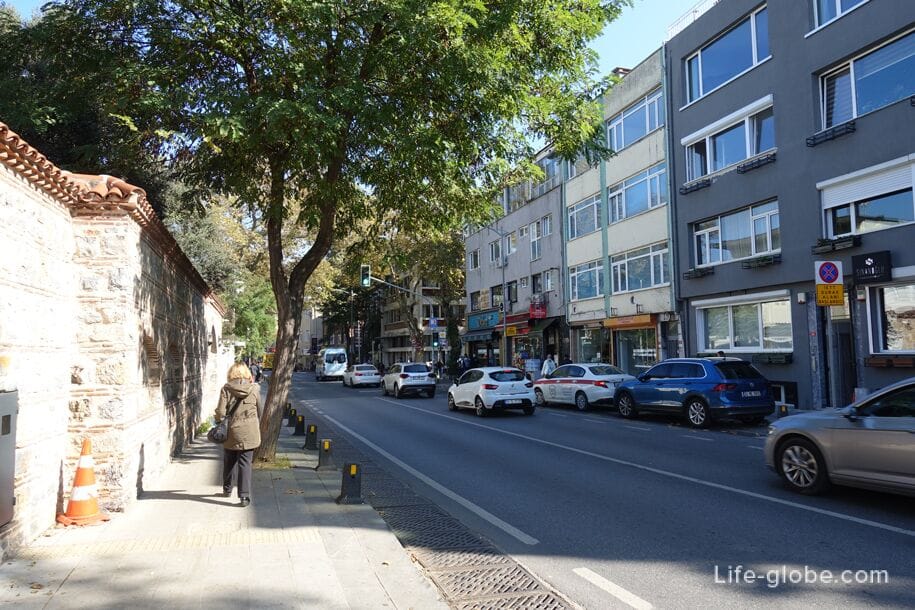
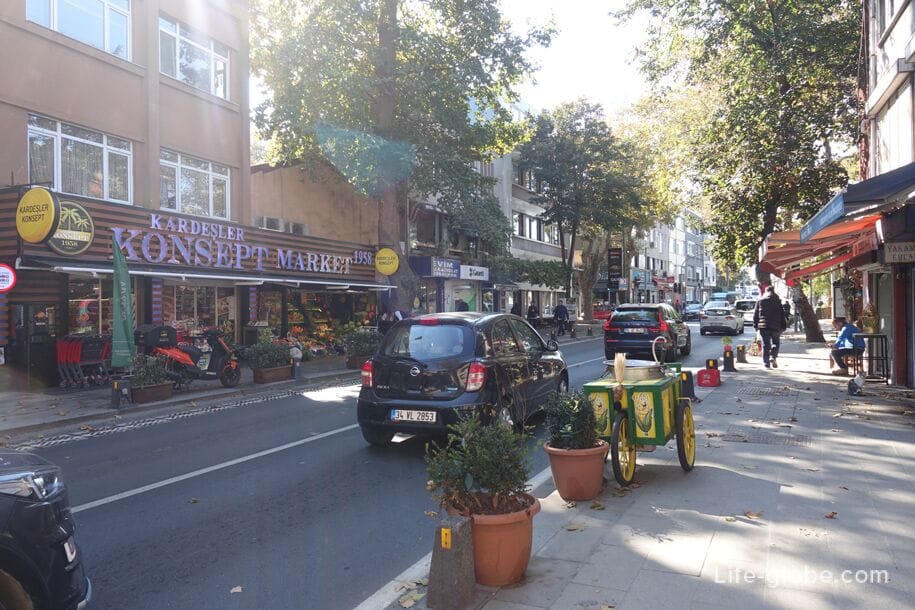
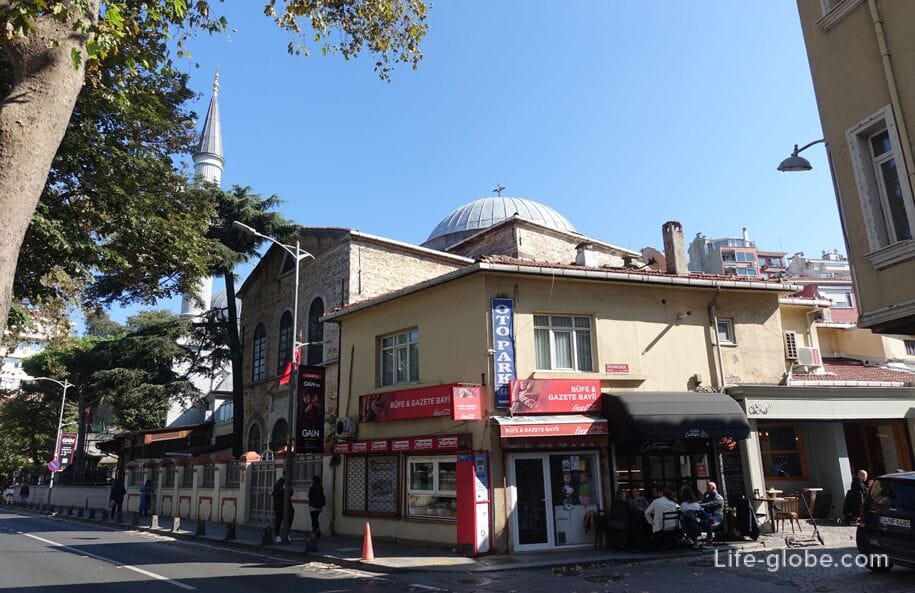
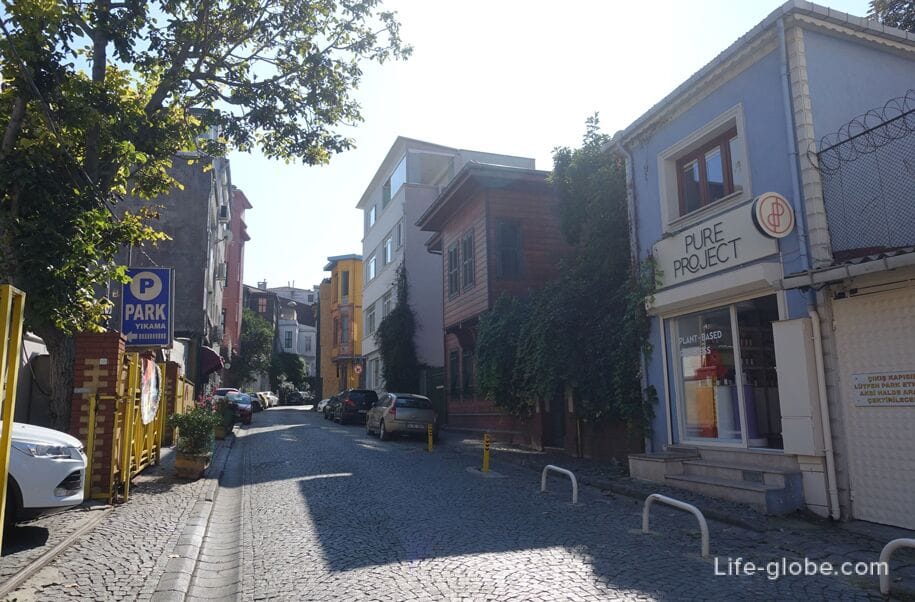

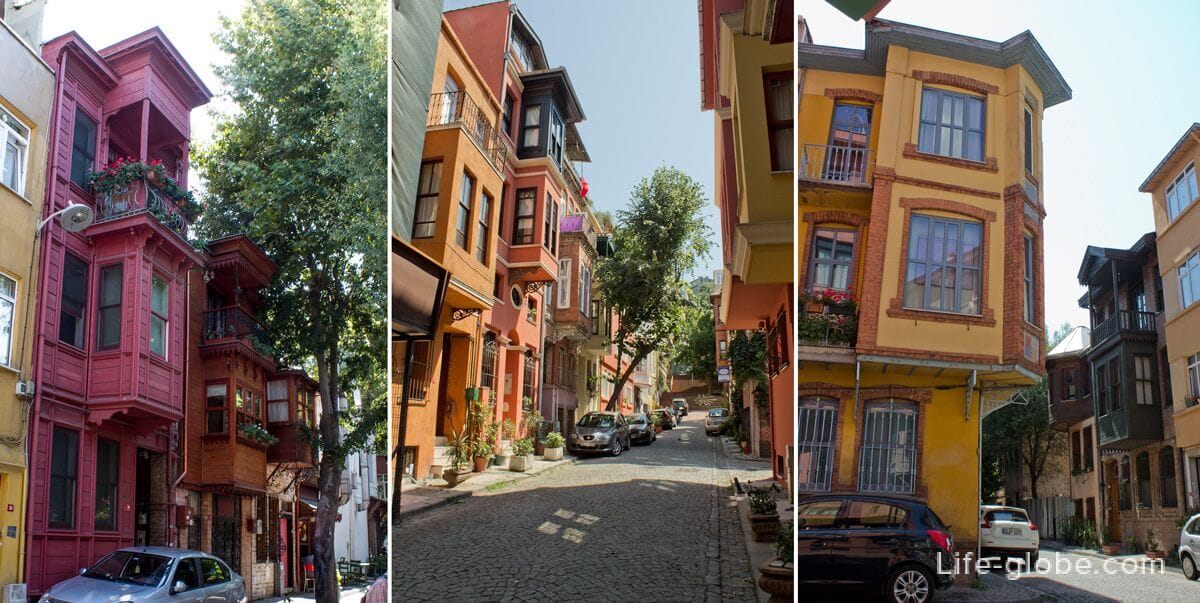
Near the shore of the quarter there is a ferry pier "Kuzguncuk Çarşı" and a small park, as well as exits to the Bosphorus.
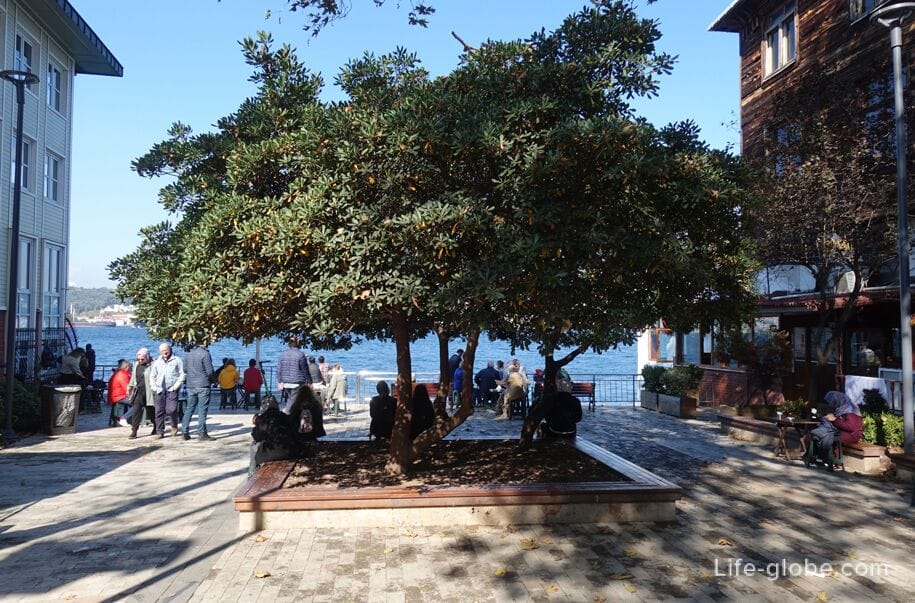
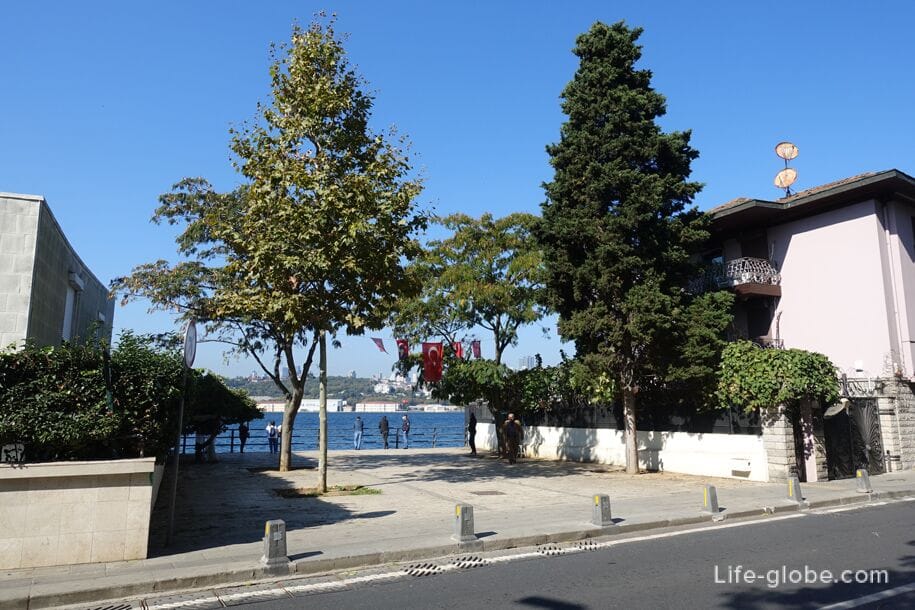
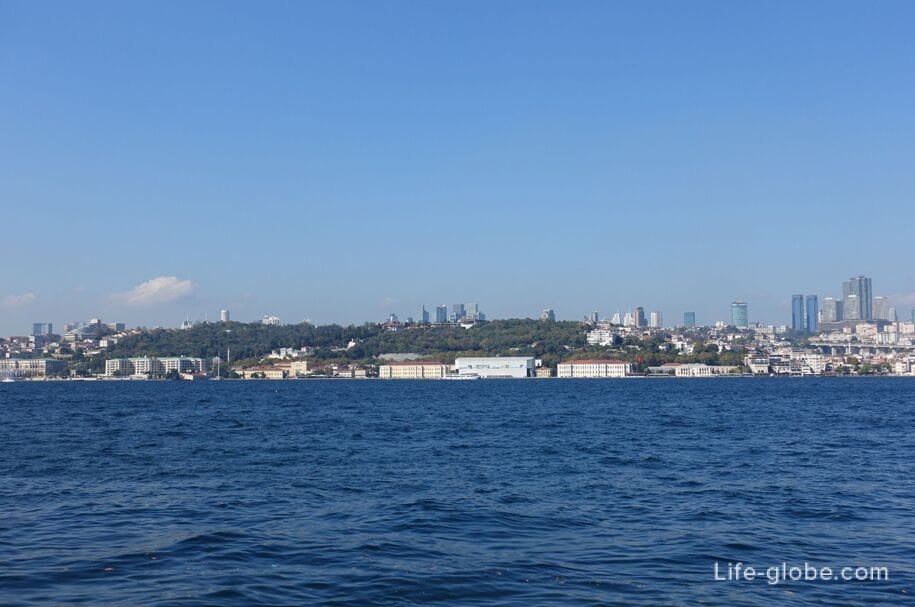
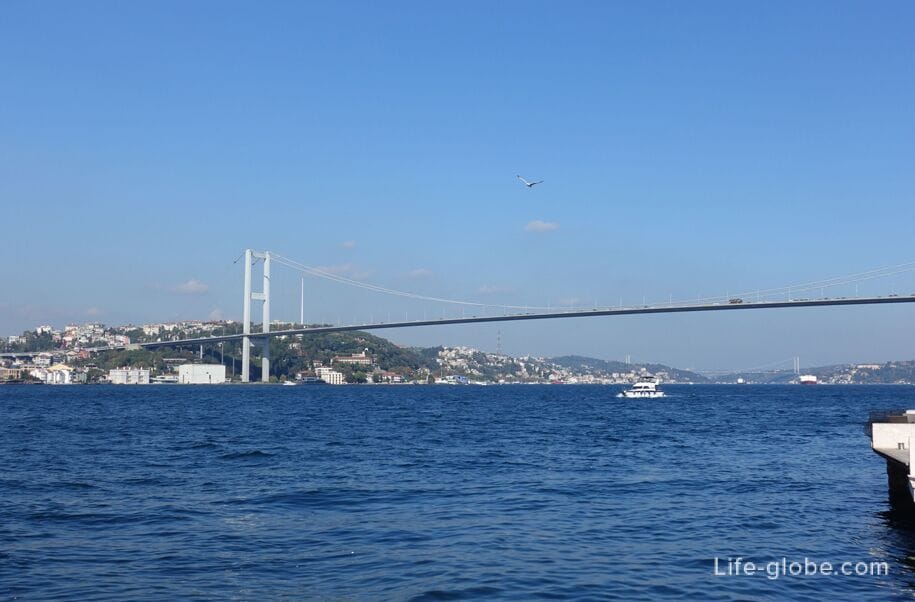


Sights, parks and objects of the Kuzgunchuk district:
- Nakkashtepe National Park (Nakkaştepe Millet Bahçesi) is a landscape park that is a green oasis of Uskudar.
The park has lush vegetation, places for walking and recreation, gazebos, wooden pedestrian zones, a cascading waterfall, a pond, a bridge, picnic areas, a zipline, an adventure trail, playgrounds (open and closed) and sports grounds, a tennis court, cafes, toilets.
The park and its terraces offer wonderful panoramic views of the Bosphorus and the European side of Istanbul.
Entrance to the park is free (free);
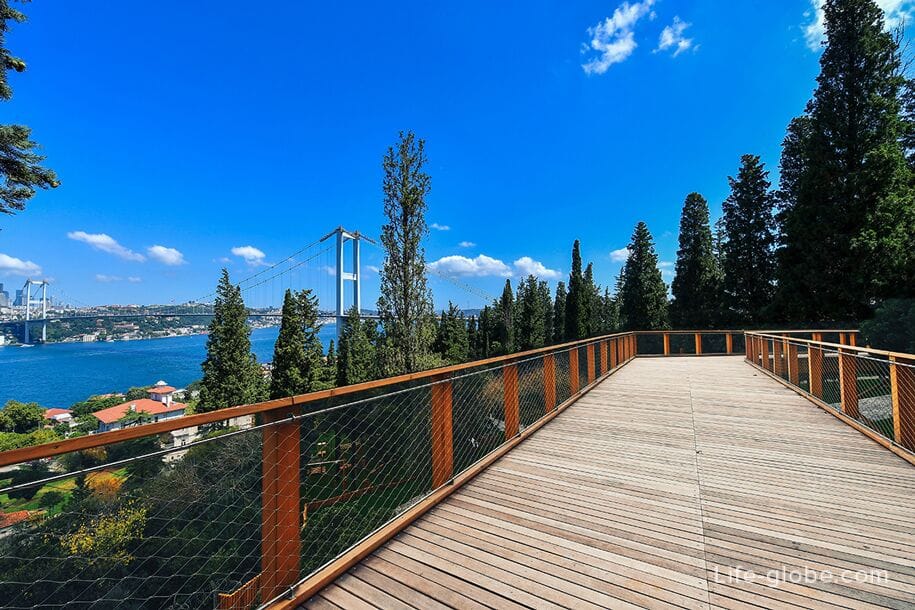
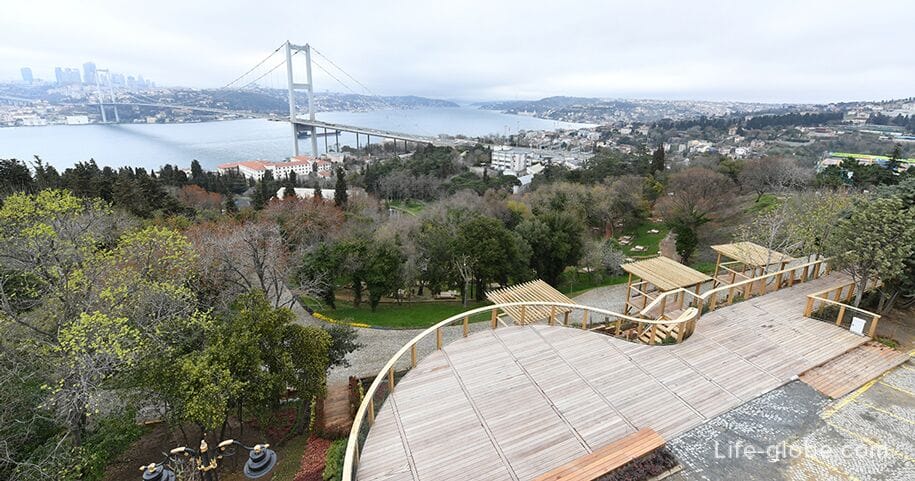

- Nakkas Hill Kuzguncuk (Nakkaş Tepe Kuzguncuk) is one of the panoramic places of the Asian part of Istanbul.
From this point there are views of the Bosphorus, the Bosphorus Bridge and partly the European and Asian sides of Istanbul.
This place is very calm and sincere.
You can park your car here (Rent a car in Istanbul →) and enjoy the views.
Address landmark location: Kuzguncuk, Abdullahağa Mezarlık Yolu No:30, 34674 Üsküdar/Istanbul, Turkey. Learn more about the location...

- Fethi Pasha Park (Fethipaşa Korusu) is a large urban park located on a hillside near the two previous locations.
The park was named after the Turkish governor, Ambassador and Minister Ahmed Fethi Pasha.
In the park: places for walking and recreation, a waterfall, suspension bridges, terraces, playgrounds, cafes, toilets.
The slopes of the park offer views of the Bosphorus and the European side of Istanbul.
Entrance to the park is free. Learn more about Istanbul parks and gardens...
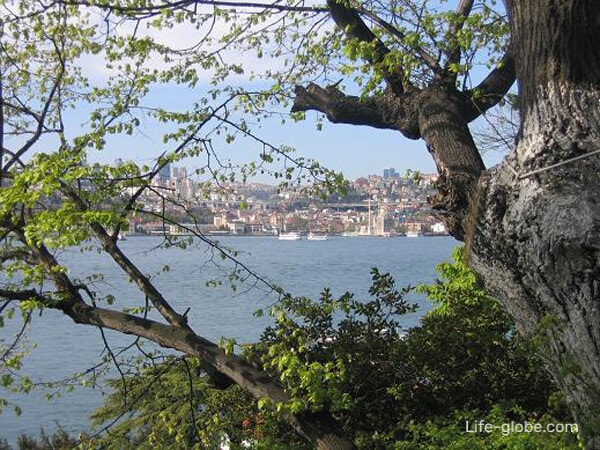
- Kuzguncuk Camii Mosque, built in 1950-1952, near the Armenian church with funds, including those donated by the Armenian community.
The mosque has one dome and one minaret with a balcony, a wooden minbari and a marble mihrab made in the form of a niche;


- The Armenian Church of St. George the Enlightener (Surp Krikor Lusavorich, Surp Krikor Lusavoriç Ermeni Kilisesi), which was originally wooden, built for the Armenian community of Kuzgunjuk by the court architect Hovhannes Amira Serverian during the time of the Armenian Patriarch of Constantinople Stepanos III (reigned 1831-1839) and opened on May 11, 1835.
The current church, built at the expense of Bedros Agha Shaljian, was erected in 1861 and replaced the former wooden building of the shrine.
The architecture of the church shows a cruciform plan, a Byzantine dome and reliefs.
Bishop Hovhannes Setyan (1800-1875), a preacher of the church, is buried next to the northern wall of the church.;
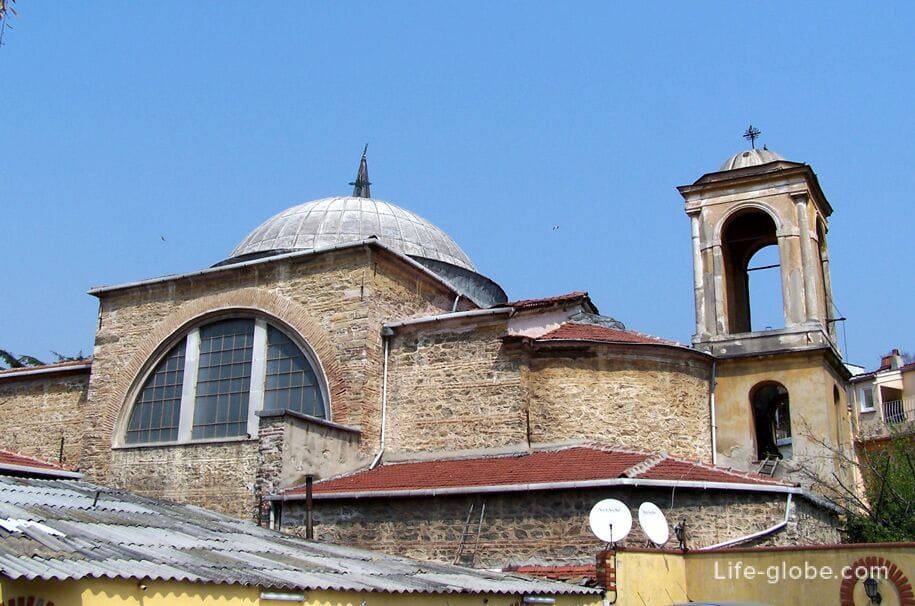
- the Greek Orthodox Church of St. George (Ayios Yeorgios Rum Ortodox Kilisesi), which, according to the inscription, underwent a complete reconstruction in 1821;
- The Greek Orthodox Church of St. Panteleimon (Ayios Panteleimon Rum Ortodoks Kilisesi), opened for worship in 1831, during the reign of the Ottoman Sultan Mahmud II.
In 1872, a fire broke out in the church building. The new construction, designed by architect Nikola Zico, was carried out in 1890-1892.
The church building is made in the form of a Greek cross of Byzantine architecture. The dome covering the central part of the building is supported by four pillars. The bell tower of the church, built by Andon Hyudaverdioglu from Kuzgunchuk in 1911, is located separately and is located above the marble entrance gate to the courtyard of the church.
On the street next to the church there is a small square-shaped holy well (ayazma, ayazma);
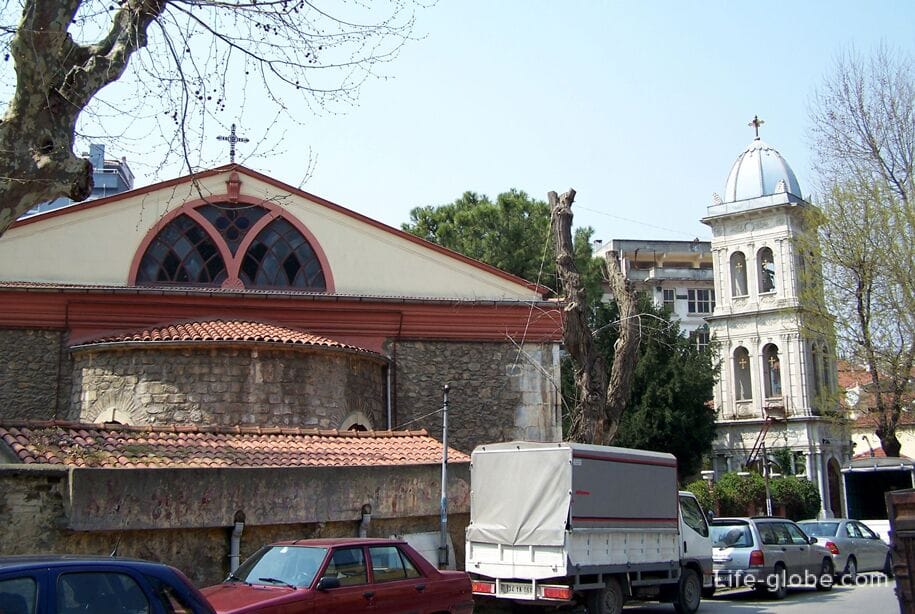
- Urianizade Ahmet Esat Efendi Mosque (Uryanizade Ahmet Esat Efendi Camii) is an elegant mosque near the waters of the Bosphorus on the outskirts of the quarter, which was built as a mesquite (small mosque) in 1860.
The mosque has an excellent small carved minaret. It is a rectangular wooden mosque with a simple interior with a wooden minbar;
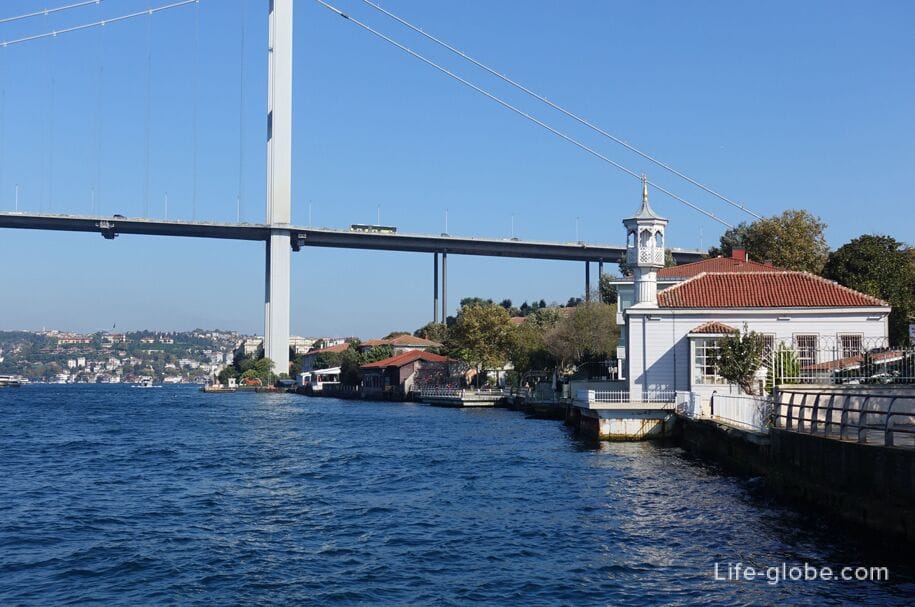
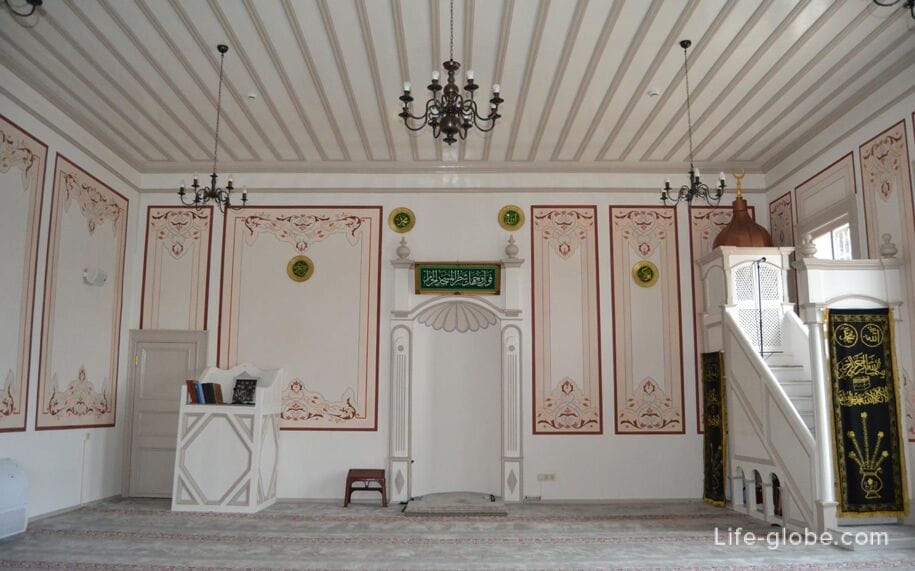
- The museum "Memory of July 15" (HAFIZA 15 TEMMUZ MÜZESI), created so that descendants do not forget the experience of the attempted military coup in Turkey on July 15, 2016.
Next to the museum there is a monument "15 Temmuz Şehitler Anıtı".
Museum website: hafiza15temmuz.org .
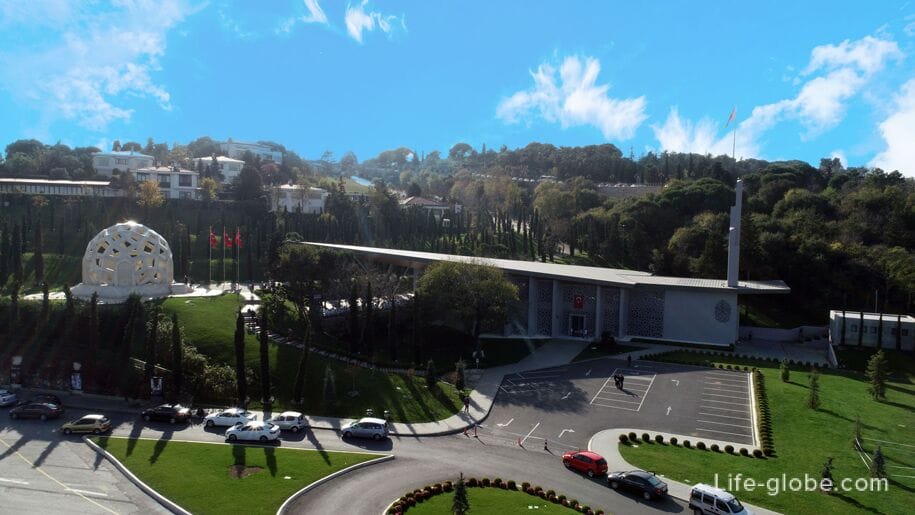
!!! In addition to the above, there are other mosques, churches and historical monuments in the Uskyudar district and the surrounding area.
Near the northwestern border of the Uskyudar district, in Göksu district, notable is the Küçüksu Palace (Küçüksu Kasrı), made in neo-Baroque style, which served as the summer residence of the sultans of the Ottoman Empire and today it is a bright monument of the Ottoman Empire and functions as a museum with recreated palace interiors and a small garden.
Entrance to the palace is paid.
The website of the Palace of Küçüksu: kucuksu-kasri. More about the Küçüksu Palace...
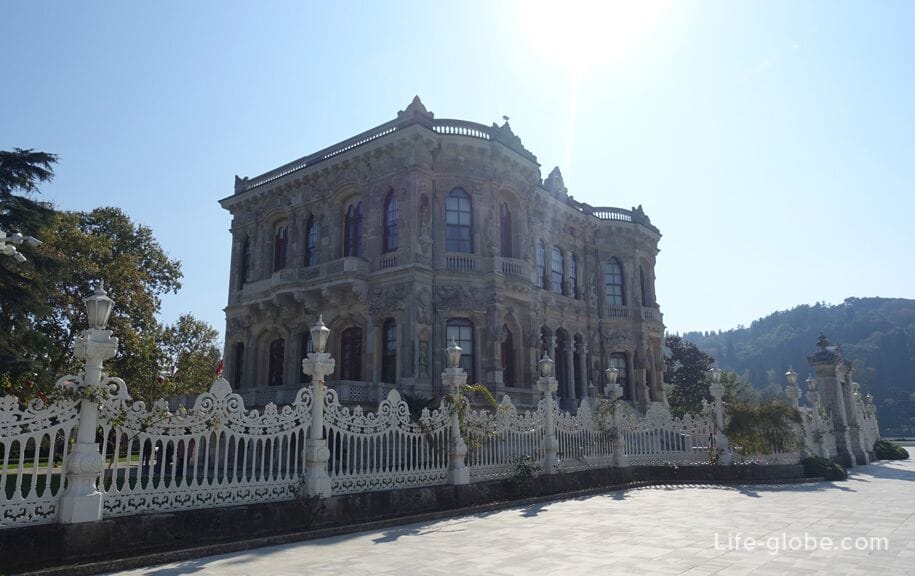

The Uskyudar area can be reached by public transport, car or taxi.
Buses, metro and the Marmaray train run from public transport to and around the district.
In addition, ferries run from the ferry berths of the district both through the Bosphorus Strait and the Golden Horn Bay, and along the Asian side of Istanbul - from pier to pier. The main ferry pier of the Uskyudar district is the pier of the same name "Üsküdar".
Istanbul ferries are public transport (Istanbul transport cards are valid).

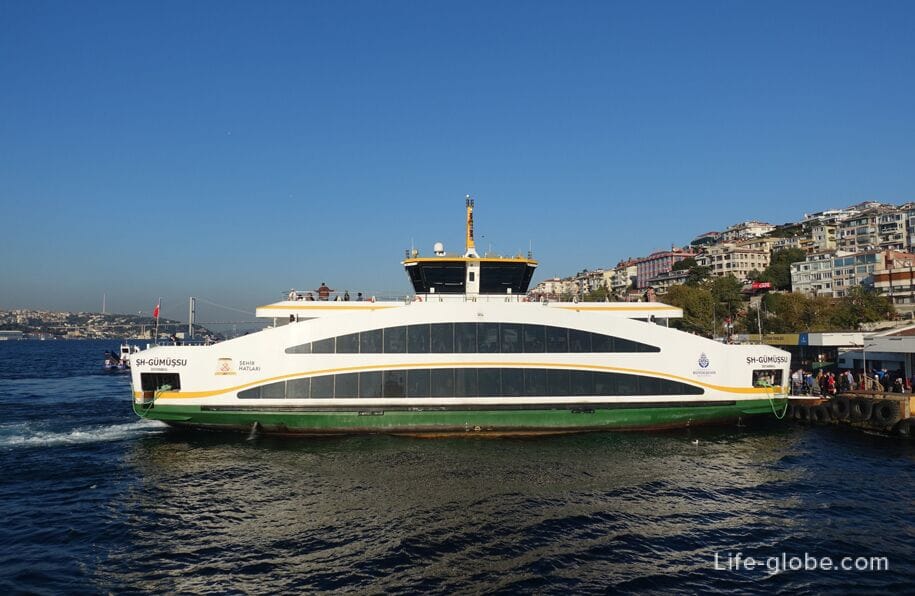
You can also visit the Uskyudar district by taking a tour on the Istanbul Hop-On Hop-Off tour bus.
There are tickets for 1, 2 or 3 days.
In the Uskyudar district, buses make stops near the Beylerbeyi Palace.
Tickets for the Istanbul sightseeing bus can be purchased here →
Some museums and sites in Istanbul, including those located in the Uskyudar district, have museum and tourist maps.
There are different types of maps in Istanbul. Some of which give the right to visit certain museums, while others, in addition to the main museums, include excursions, as well as some shows and entertainment, public transport rides and discounts on airport transfers.
The classic and most common is the museum card "Museum Pass Istanbul" (Museum Pass Istanbul), which gives the right to enter some museums of the city. There are also more extended Istanbul E-Pass and Istanbul Tourist Pass cards, which give the right to visit museums, attractions, guided tours, an aquarium, shows, cruises along the Bosphorus, trips outside the city, etc.Learn more about museum and tourist maps of Istanbul...
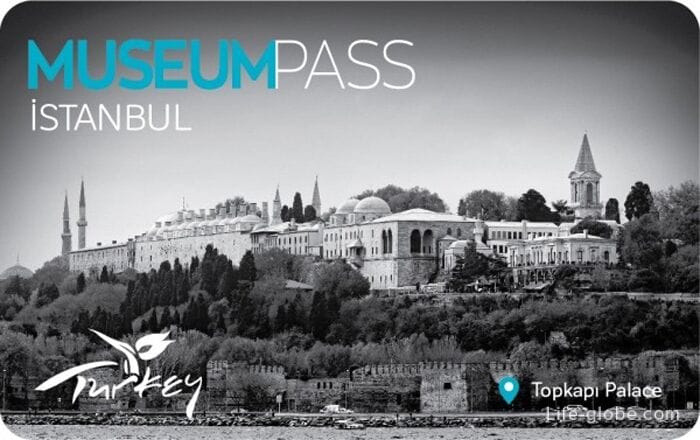
There is a large selection of accommodation facilities in the Uskyudar area, ranging from 5- and 4-star hotels, villas and apartments (full-fledged apartments with all amenities), ending with budget guest houses and hostels.
There are accommodation facilities near the waters and with views of the Bosphorus, for example,
The Bosphorus Palace Hotel is located in a renovated historical building in neo-Ottoman style, in a picturesque part of the Uskyudar district.
At the hotel: bar, garden, free Wi-Fi and parking.
The hotel rooms offer views of the Bosphorus or the gardens.
Breakfast is included in the room rate. Link to the hotel
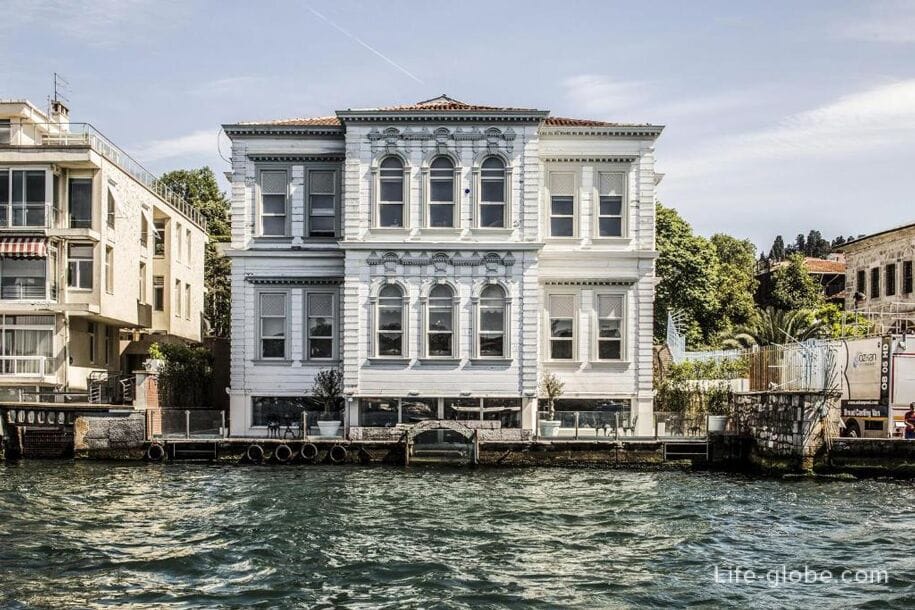


Villa Luxurious Waterfront Mansion with Amazing Bosphorus View with Bosphorus View, garden, terrace, free Wi-Fi, air conditioning, 2 bedrooms, TV with cable channels, fully equipped kitchen with dishwasher and refrigerator, washing machine and 3 bathrooms with a spa bath. Link to the villa
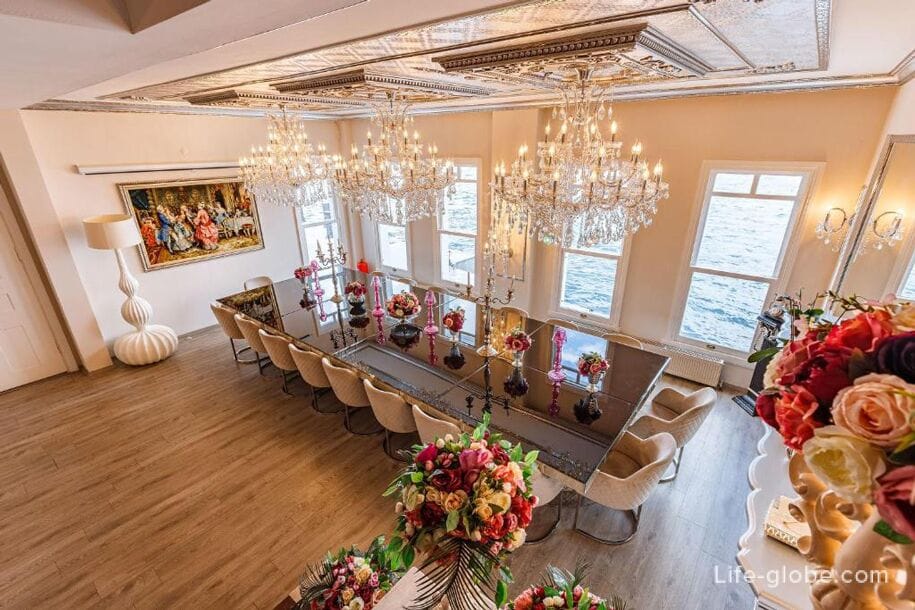

Hotel Sumahan - on the Water, located in a renovated 19th century distillery building right on the shore of the Bosphorus.
At the hotel: a terrace with a view of the Bosphorus, a restaurant, a wellness center with a Turkish hammam and a fitness room, free parking.
Many rooms have a Turkish-style bathroom with marble trim. Meeting and banquet facilities with views of the Bosphorus are also available. Link to the hotel
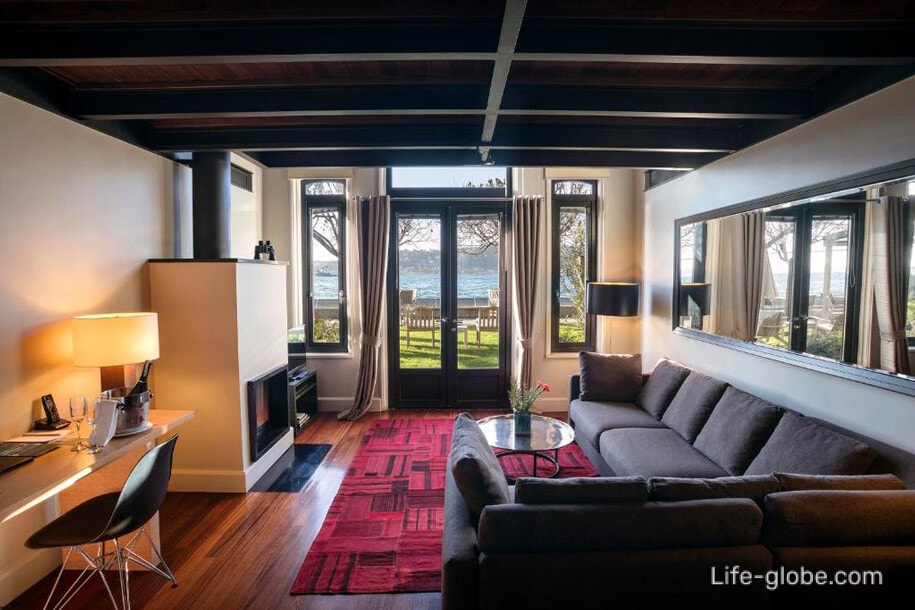

The 5-star Address Istanbul Hotel is also notable in Uskudar, located in a modern high-rise building from which panoramic views of Istanbul can be enjoyed from the hotel rooms.
The hotel has a restaurant, a fitness center, a bar, a shared lounge, a hammam, a sauna, a kids club, a business center, a 24-hour front desk and free Wi-Fi throughout.
The rooms are equipped with air conditioning, a desk, a kettle, a minibar, a safe, a flat-screen TV and a private bathroom with a shower. There is also a coffee machine in the private rooms. Bathrobes and an iPad are provided.
Breakfast may be included in the room rate. Link to the hotel

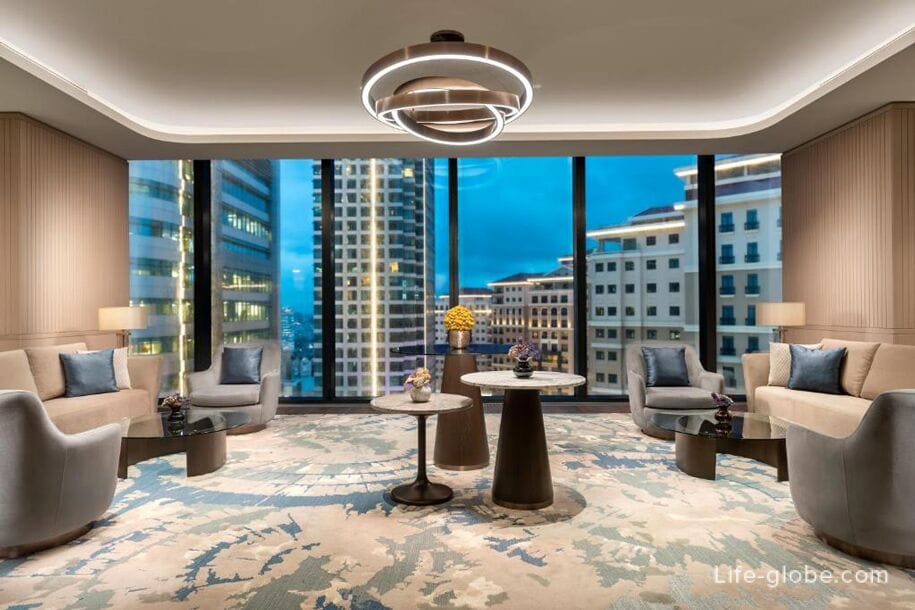
All accommodation facilities in the Uskyudar area can be viewed and booked here
